Outside of the binary: Northeastern’s transgender, nonbinary, and gender nonconforming community
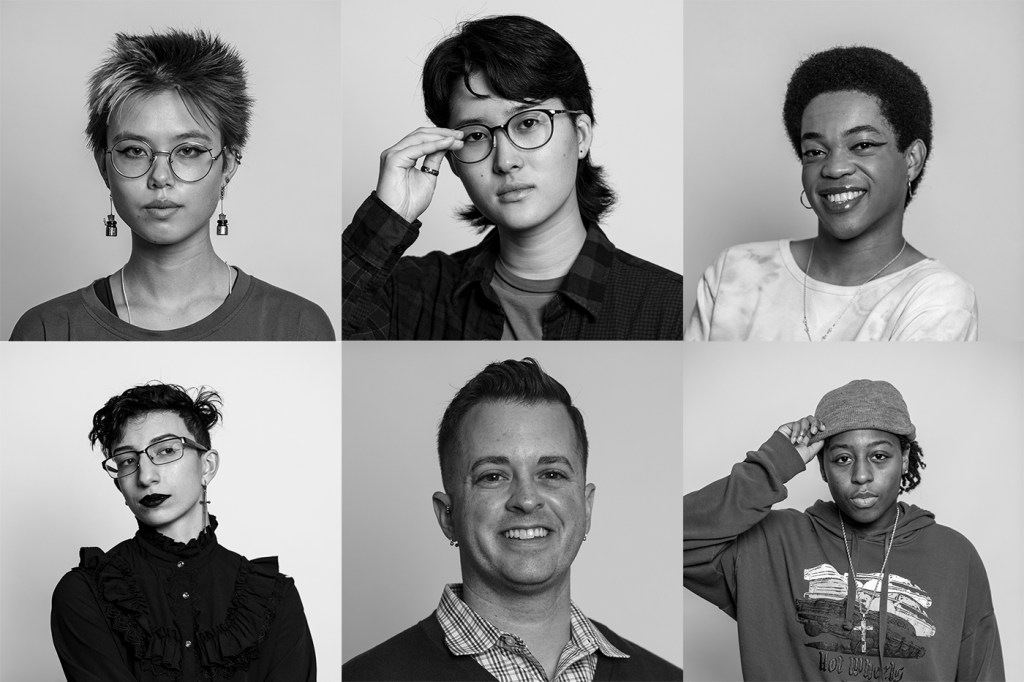
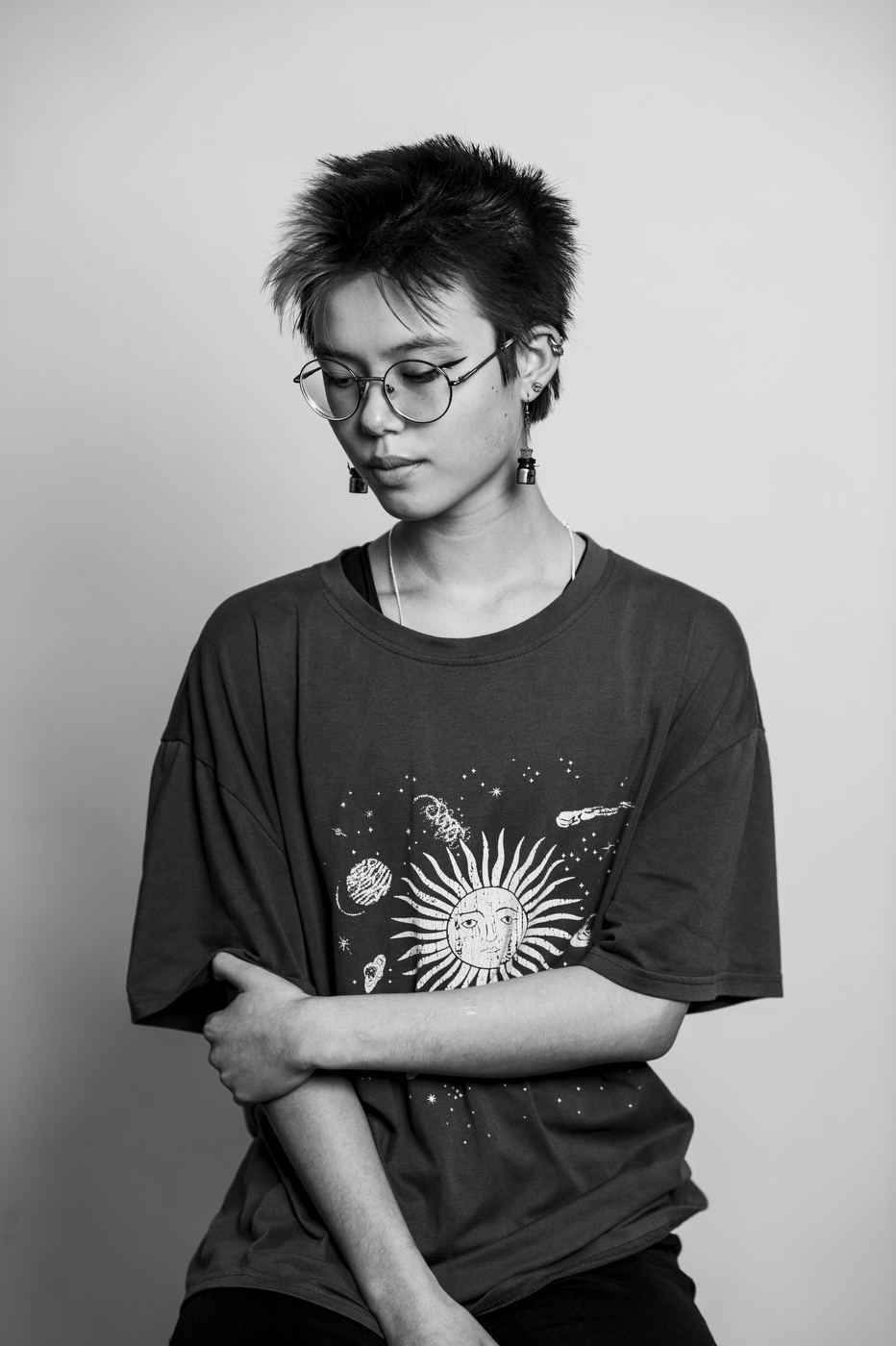
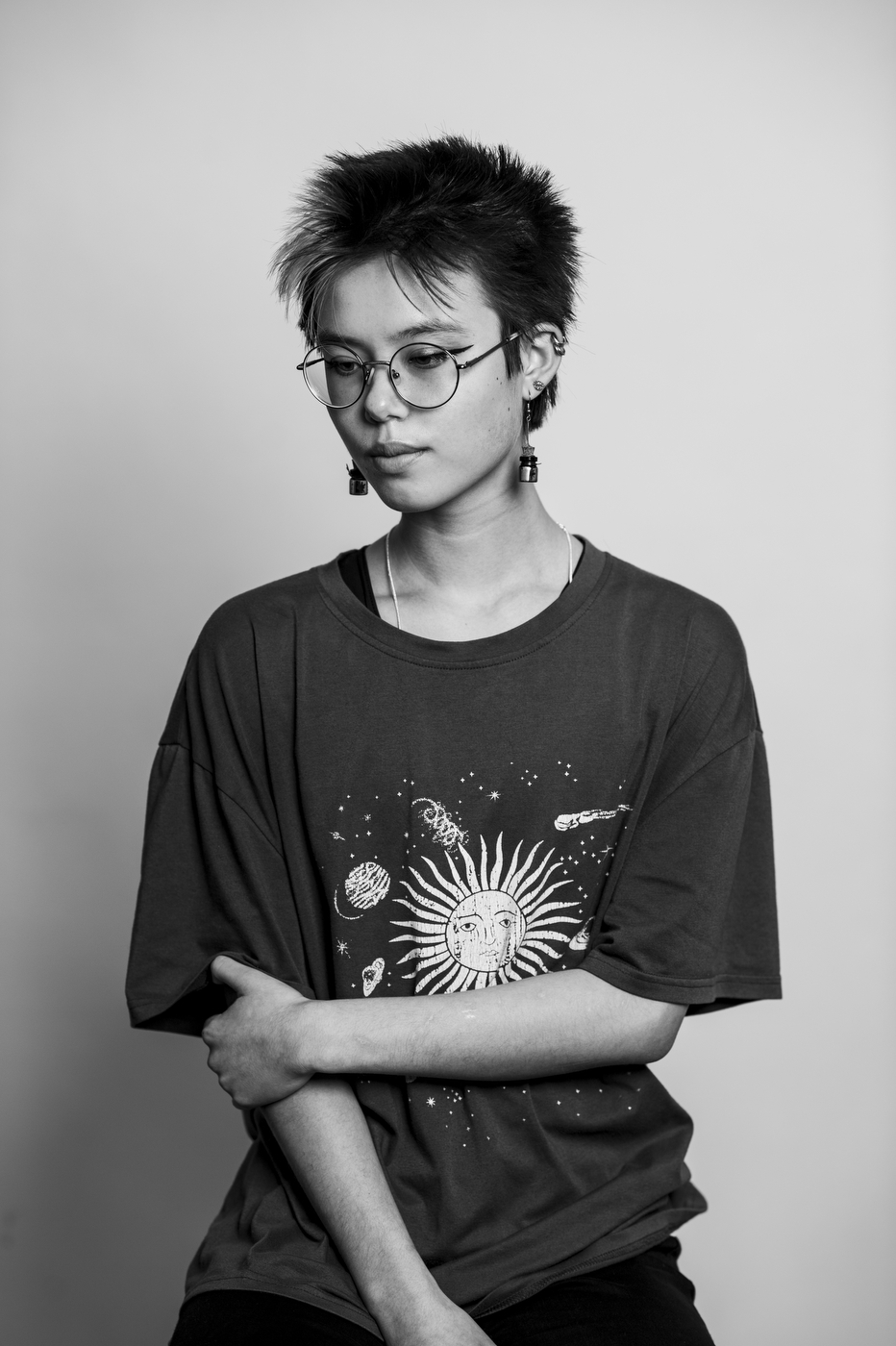

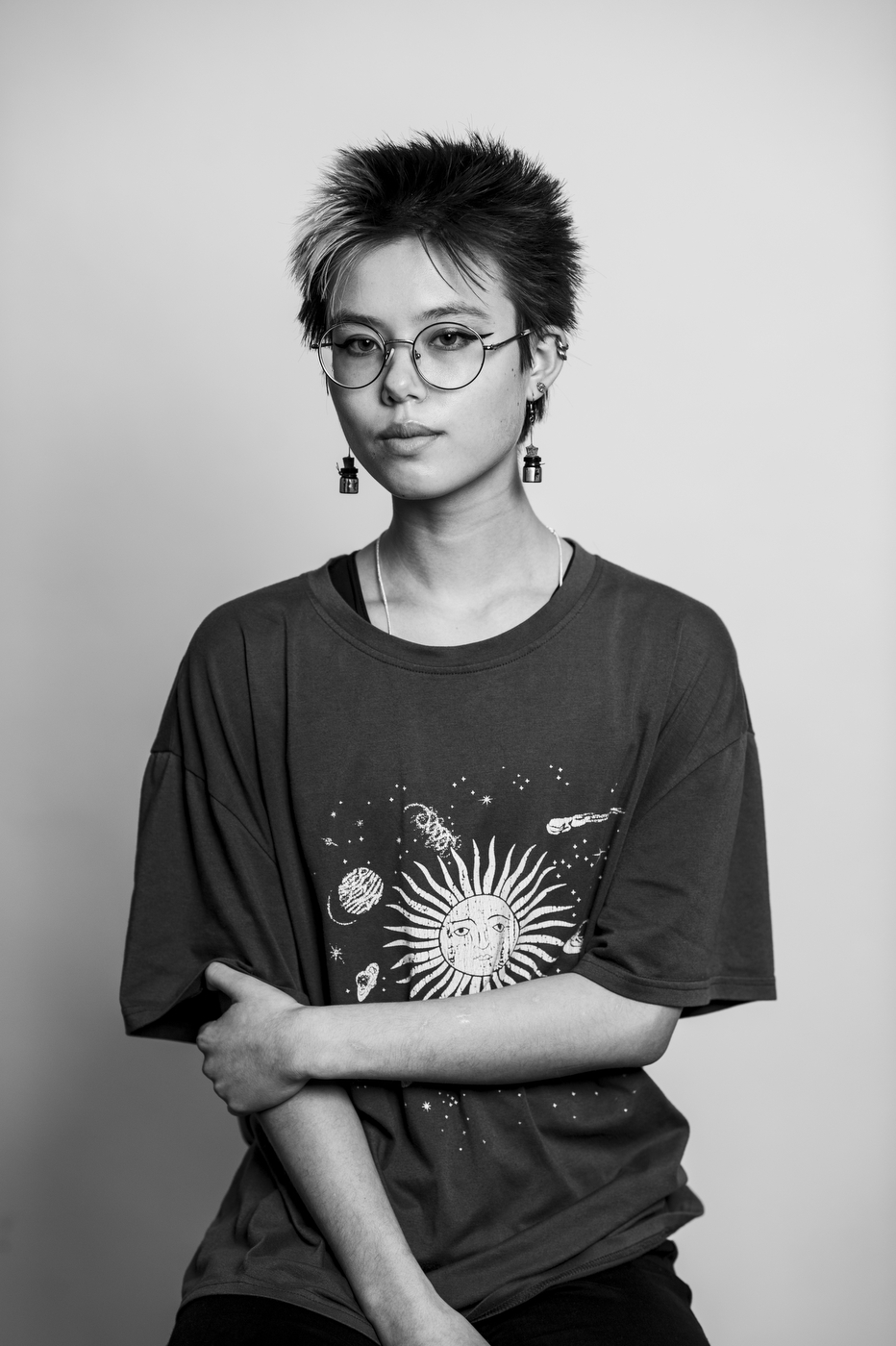
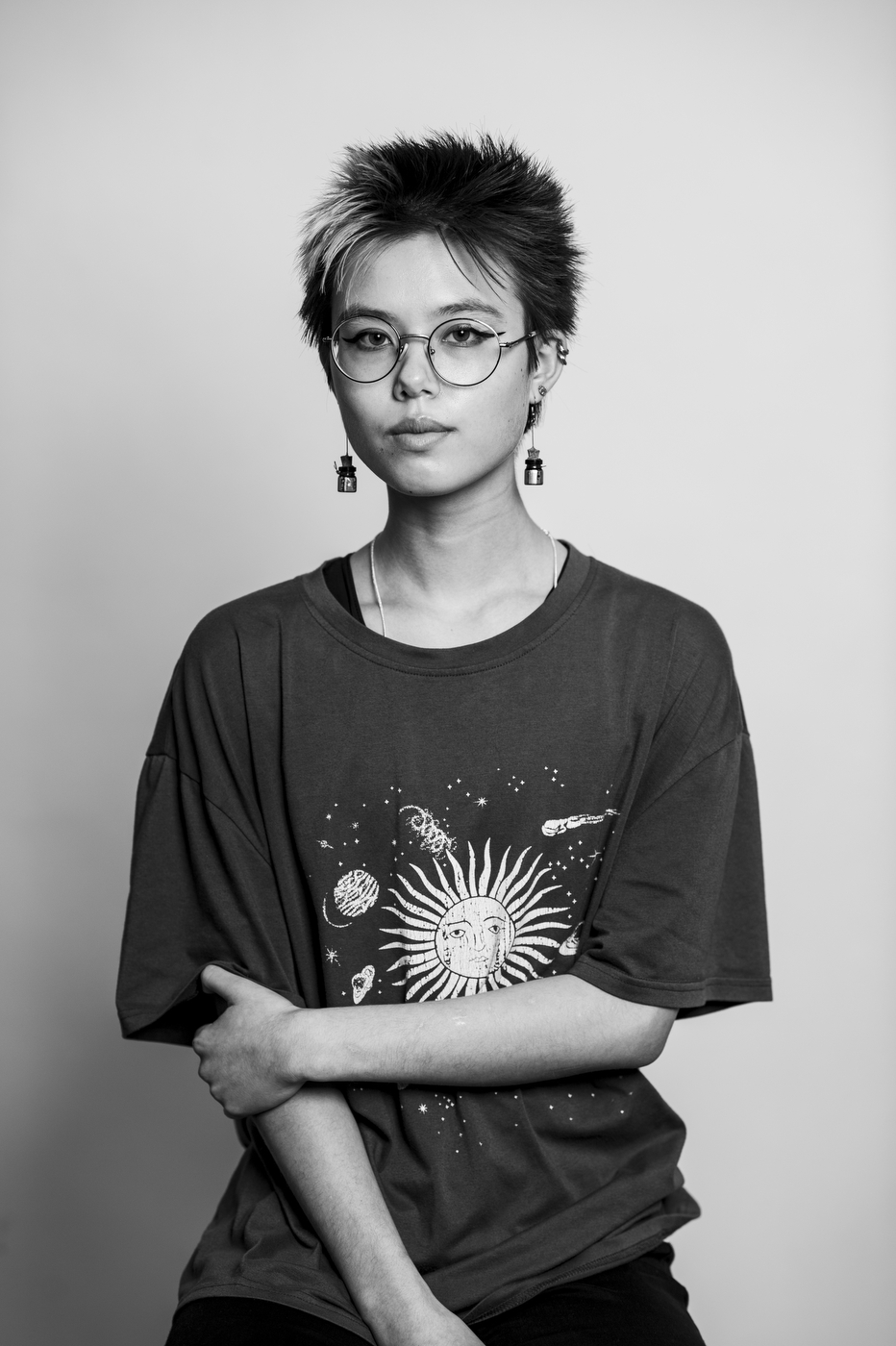
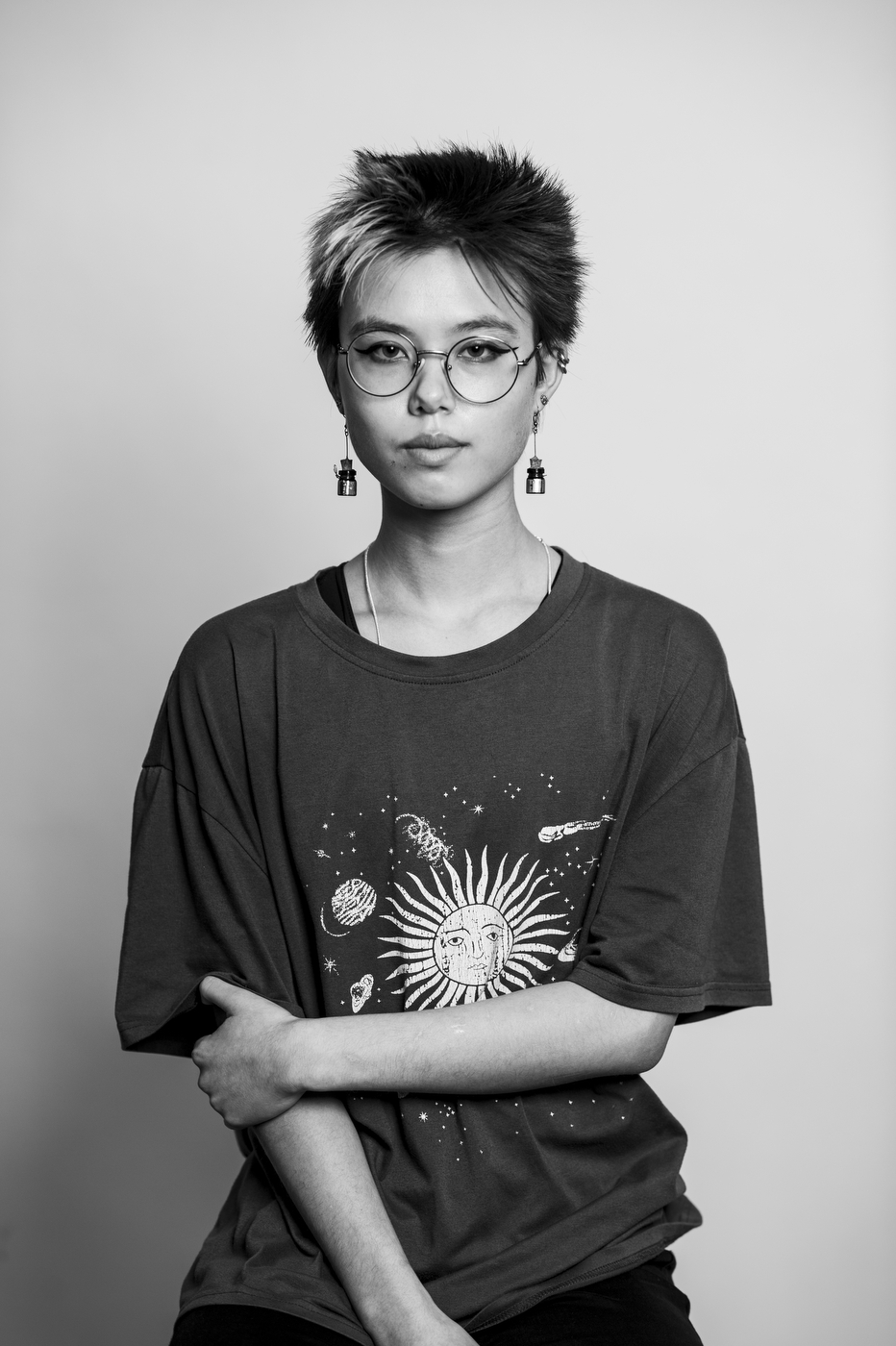
Kai Doran
they/them, first-year philosophy and neuroscience
I realized I was queer in seventh grade, and I realized I was nonbinary about a year later when someone asked me, “What’s your gender?” No one had asked me before, and it had never occurred to anyone to ask me how I actually identified. That brought up a huge question: “How do I identify?” I realized that I didn’t really think about gender because I don’t have a gender, and it’s because I’m nonbinary. More specifically, I identify as agender, which is the lack of any sense of gender, for lack of a better way to describe it. It used to be really hard, especially when I was starting to come out. I wasn’t used to being misgendered. I started realizing why I was so uncomfortable with my pronouns at the time. I cut my hair. I started presenting in a way that was more consistent with my gender identity and who I was. And people obviously react to that. It’s sometimes exhausting trying to be myself in this world because people don’t make it easy to be nonbinary.“I don’t think people realize how much joy there is in one’s identity and pride in oneself. You get a unique lens when you’re not trapped in this idea that everything has to be black and white. You see the world as what it is, in shades of gray.”It’s when people ask my pronouns; that’s when I feel seen. When people use my pronouns, it’s when people call other people out for not using my pronouns. If you don’t understand, just use my pronouns. Sometimes I’m just like, “I don’t care if you get who I am; I just care if you respect me for who I am.” You can be nonbinary, and you can still like traditionally feminine things. You can be nonbinary, and you still go by the name you had at birth. You can be nonbinary and not necessarily use they/them pronouns, which is the case for a lot of people. When it comes down to it, if we can learn complex concepts—physics, chemistry, and biology—then we can understand that some people are “theys,” and some people are “shes,” and some people are “hes.” I want people to know that being nonbinary isn’t just about suffering. [It’s true that] we have many difficulties in our lives that we wouldn’t be facing if we were cisgender. But I don’t think it’s fair to reduce the entire nonbinary experience to just, “…wow, this really sucks.” I don’t think people realize how much joy there is in one’s identity and pride in oneself. You get a unique lens when you’re not trapped in this idea that everything has to be black and white. You see the world as what it is, in shades of gray. I wish I were born into a world where everyone would use my pronouns, where people wouldn’t see me as less than, or people wouldn’t treat me differently for who I am. But people are working to change that. This isn’t a life of misery, and you’re not condemned to anything because of who you are.
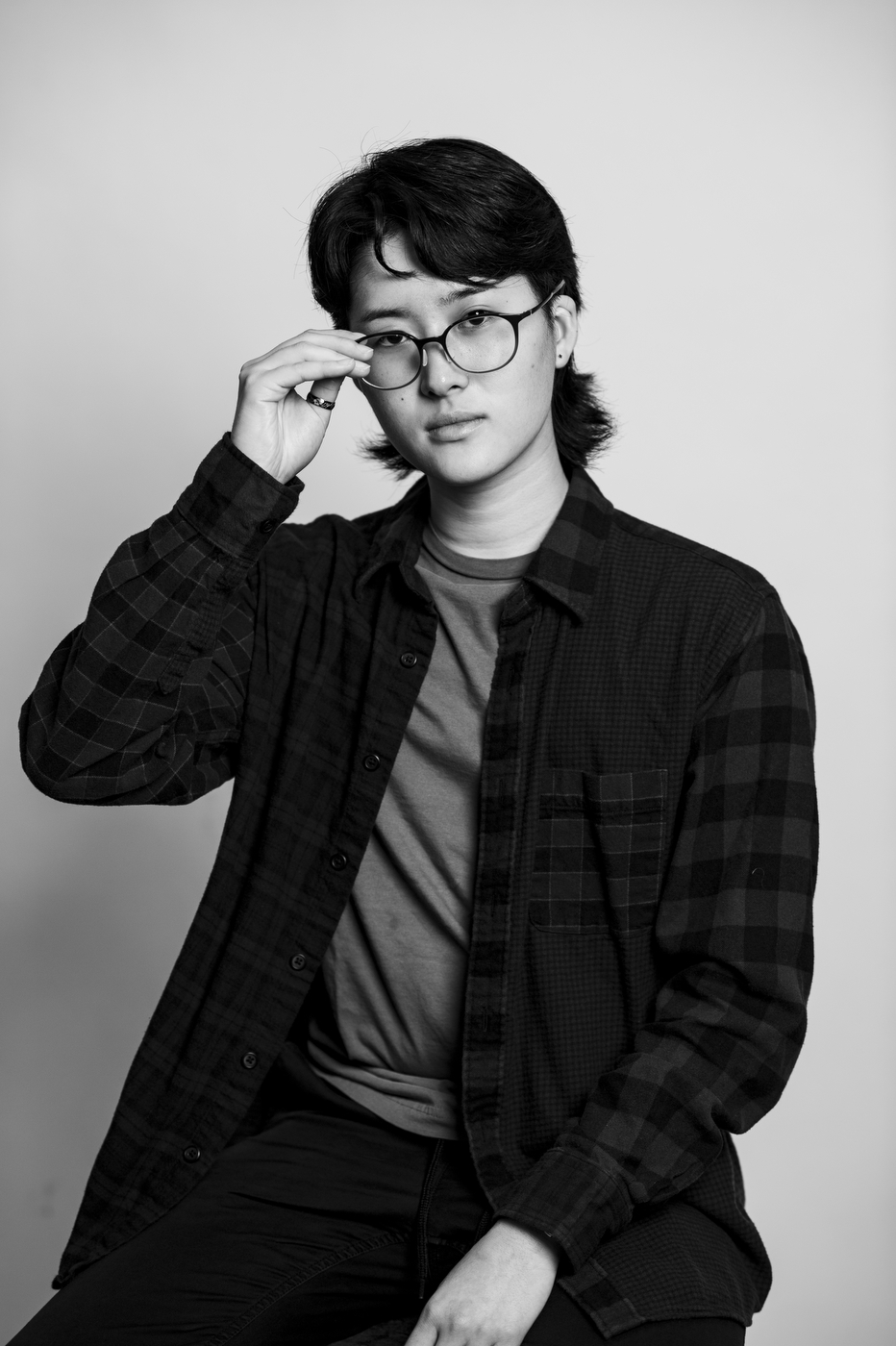
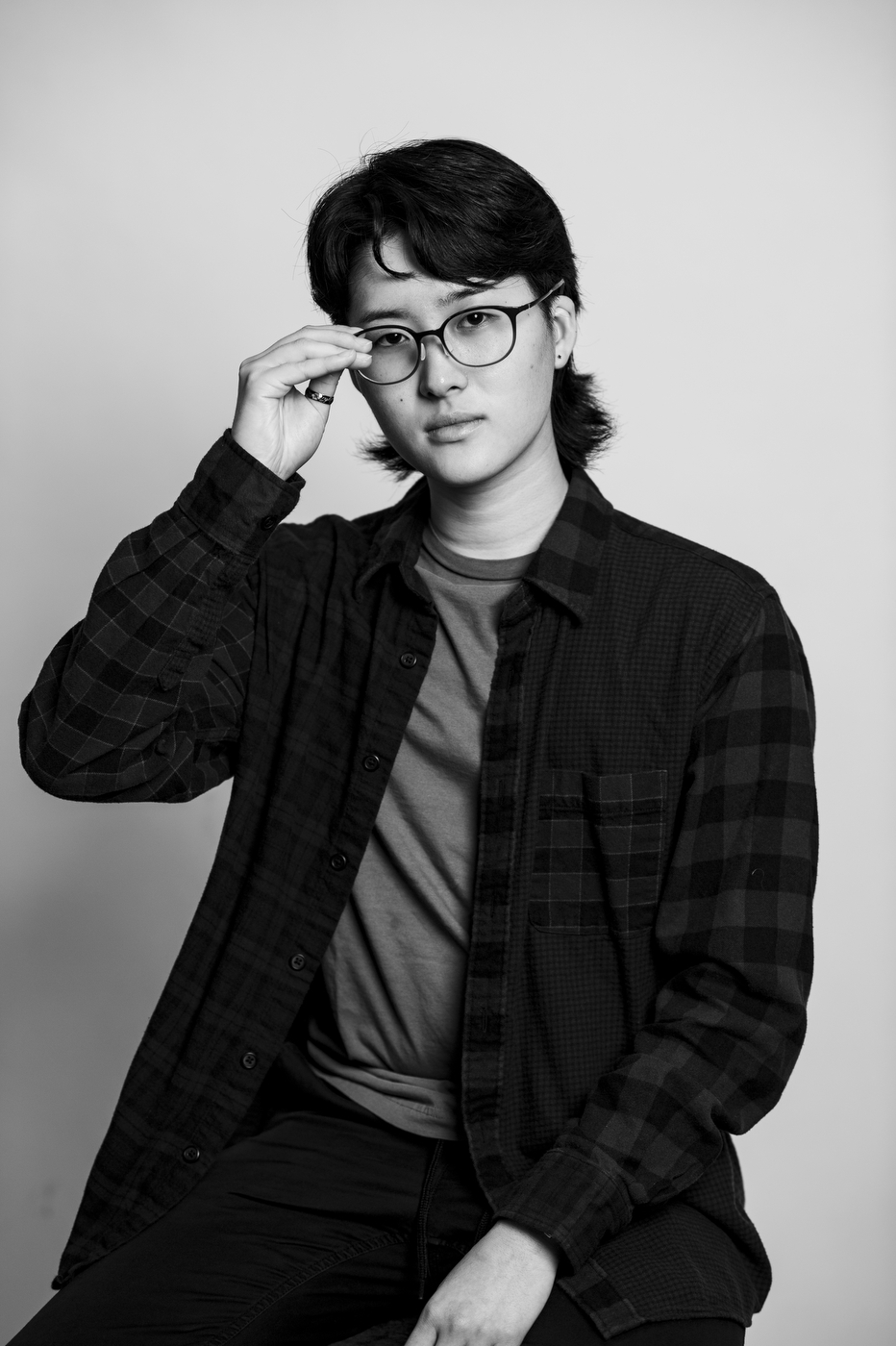

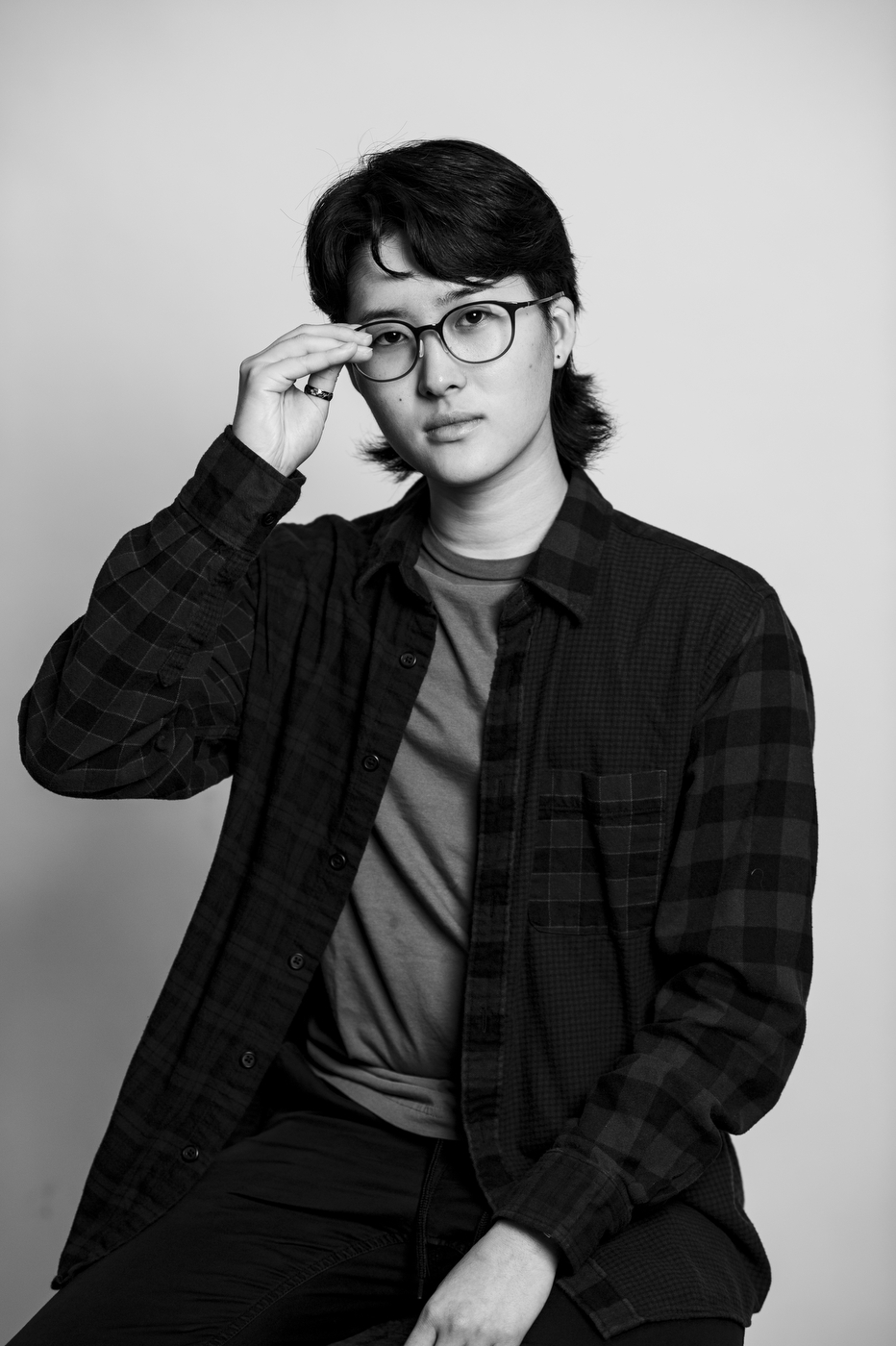
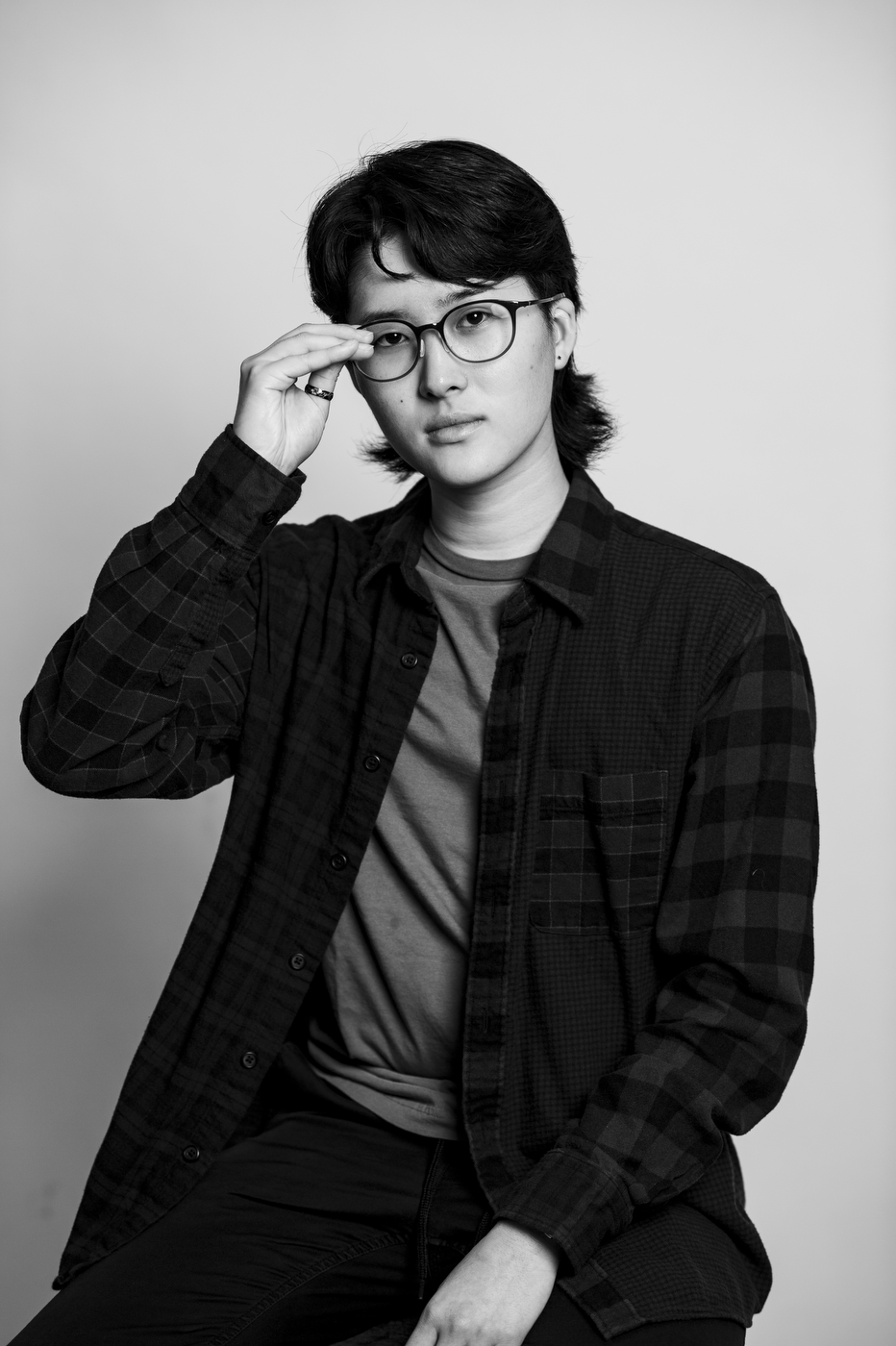
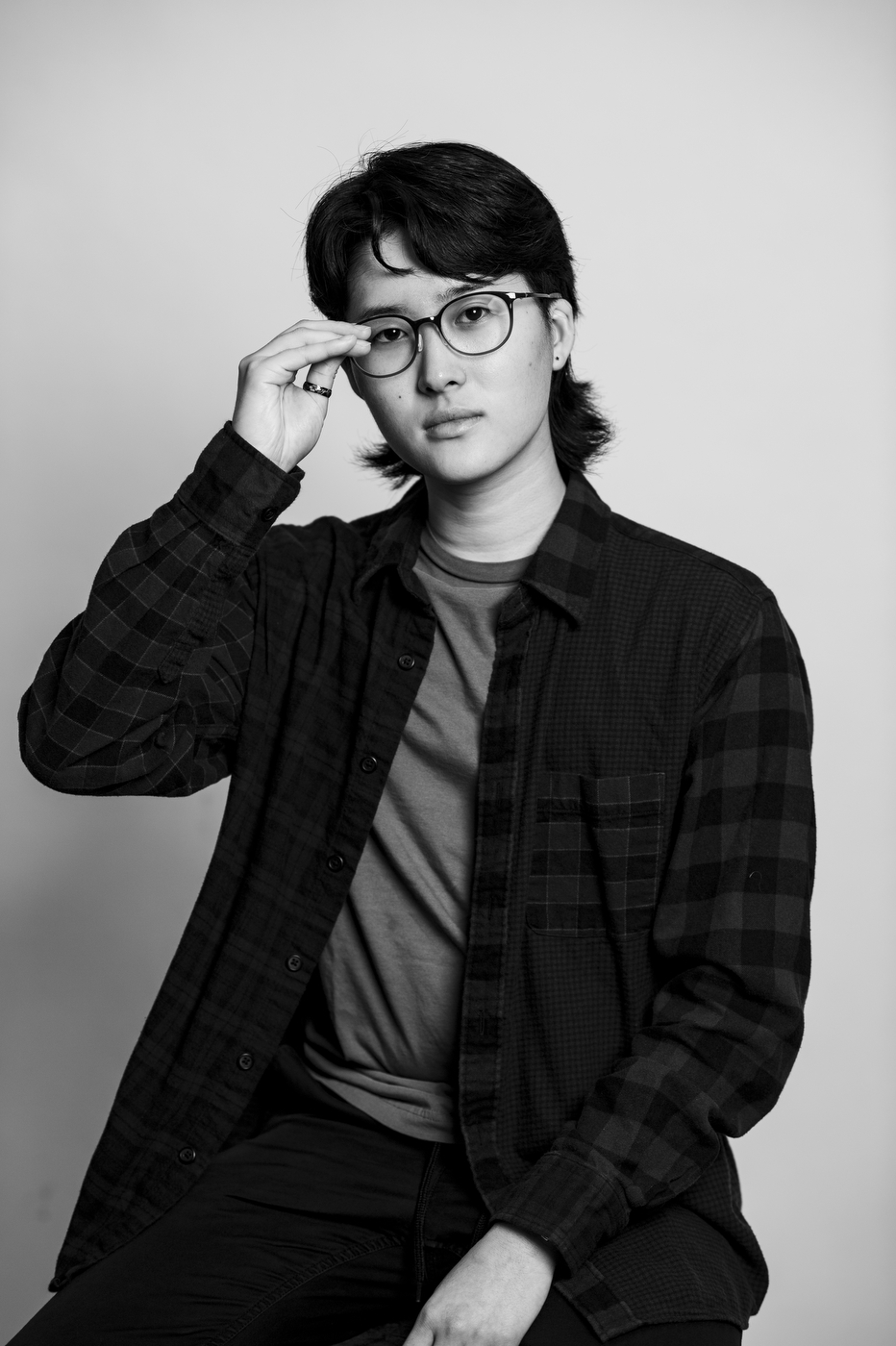
Saren Nonoyama
he/him, fourth-year health science
I was definitely raised with the notion that there were only two genders and two sexes. I was assigned female at birth, and I actually was confidently a woman for most of my life. But then the gender identity crisis hit, senior year of high school. It came out of nowhere. One time I was in my high school gym, and someone was just using she/her pronouns non-stop. They didn’t know. And I didn’t know either, but it felt like someone was stabbing me in the stomach. Dysphoria is not just mental, it’s very physical. I felt sick to my stomach. And that’s when I started researching. I watched a lot of YouTube videos, and I came across someone named Chella Man. He’s an Asian, Jewish, Deaf, genderqueer person. And he was actually the reason I found out about nonbinary and genderqueer identities and the possibility of using he/him pronouns while not being a trans man or a man. I didn’t know that was possible because I think the first thing you learn about trans people is the binary trans identities. And he was also the first representation of Asian transmasculine people I found.“One of the most unified responses was that my visibility on social media helps. I’m very open about my trans identity on social media, documenting my top surgery journey and things like that. It was really bittersweet because it’s been worth it to be so emotionally vulnerable [online], but not everyone can do that.”I do wonder if I didn’t come across his channel, where would I be? Maybe I would be a trans man, or maybe I wouldn’t know that I’m trans at all. Ever since freshman year at Northeastern, I’ve actually only been asked for my pronouns by one professor, and I’m a fourth-year. Her asking for my pronouns was honestly life-changing. I made a survey recently because I came into college with he/him pronouns, yet people were still misgendering me. I had a few questions like, “What helps you use my correct pronouns?” One of the most unified responses was that my visibility on social media helps. I’m very open about my trans identity on social media, documenting my top surgery journey and things like that. It was really bittersweet because it’s been worth it to be so emotionally vulnerable [online], but not everyone can do that. And I feel like I have to be open because I don’t plan on going on testosterone. I’m never going to have that privilege of “passing” or being cis-assumed by the public. It sucks that we need to be vulnerable to be seen. Presenting projects on trans-related topics is one of the ways I come out to my classmates in college, especially after the professors misgender me. I’m definitely passionate about trans issues, but always being the only one to acknowledge them in classes is exhausting. That survey was super eye-opening and really made me think about how privileged [I am] to exist in an environment where I can be open, but simultaneously unprivileged because I need to be open to feel respected and seen for who I really am. When I came out to my mom as nonbinary, I came out to her right before I asked her to cut my hair off. And it was New Year. New year, new me, literally. What really helped her understand what nonbinary means was there’s no social identity where everyone in the world can fit into just two boxes. How do 7 billion people possibly fit into two boxes? They don’t. At the end of the day, all labels aside – I’m Saren. That’s all there is to it. I’m just a human being trying to live life as my most authentic self.
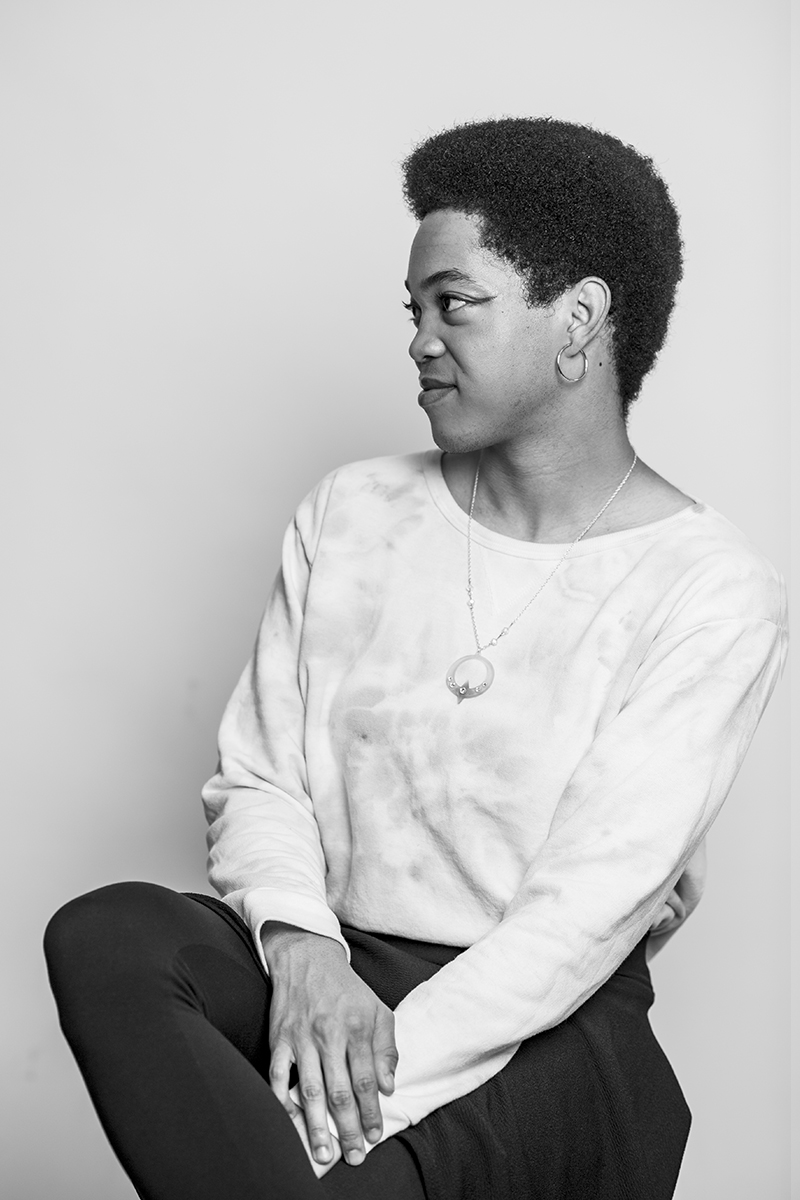
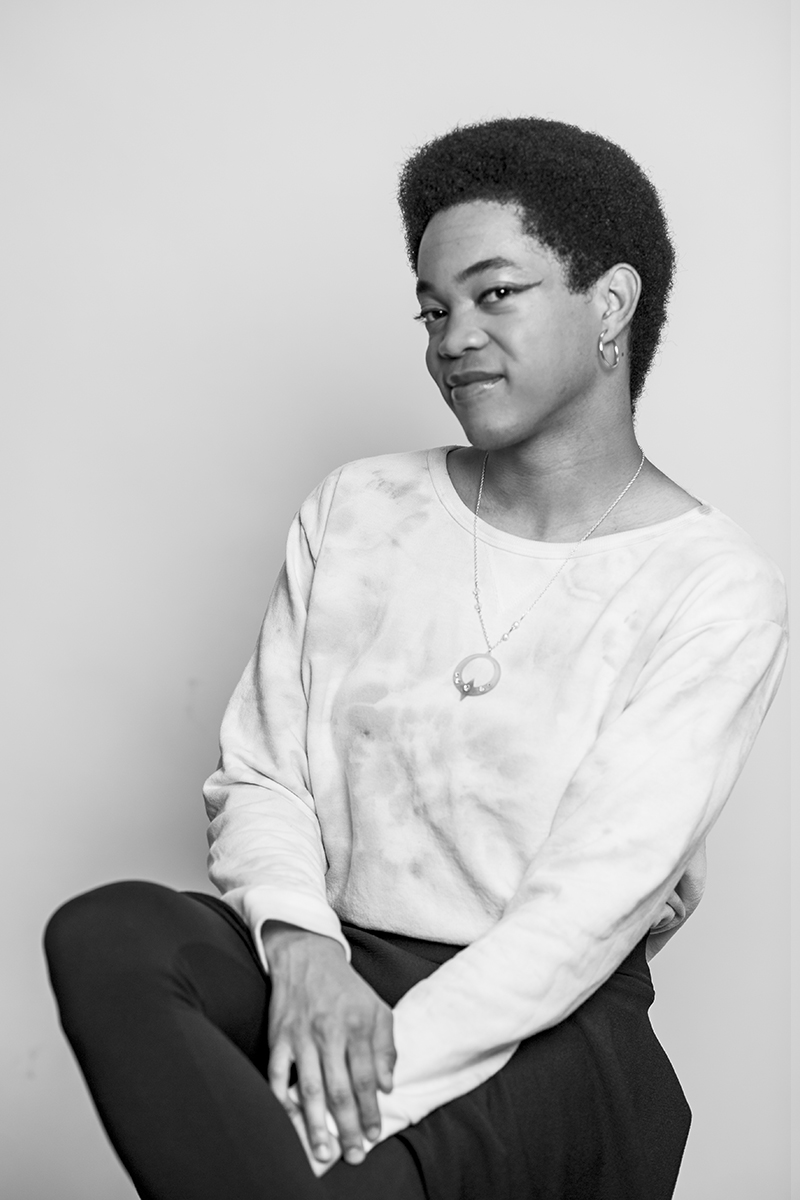
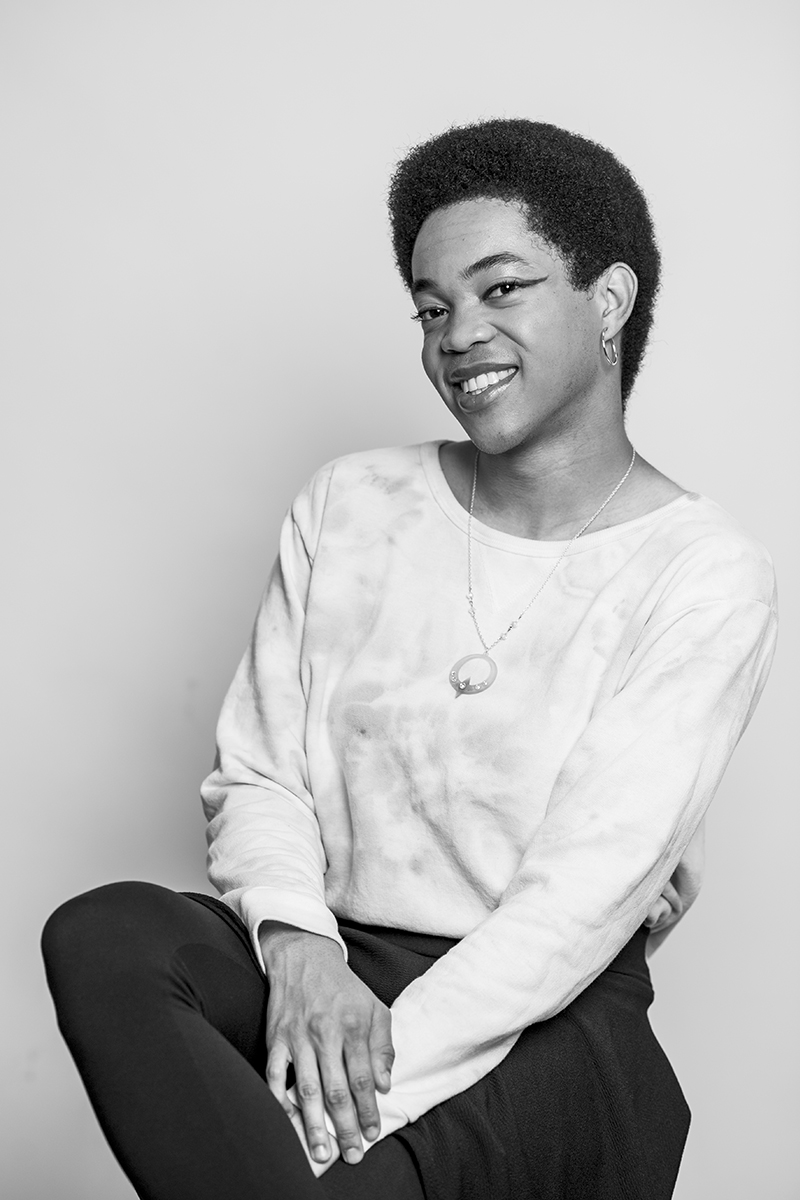
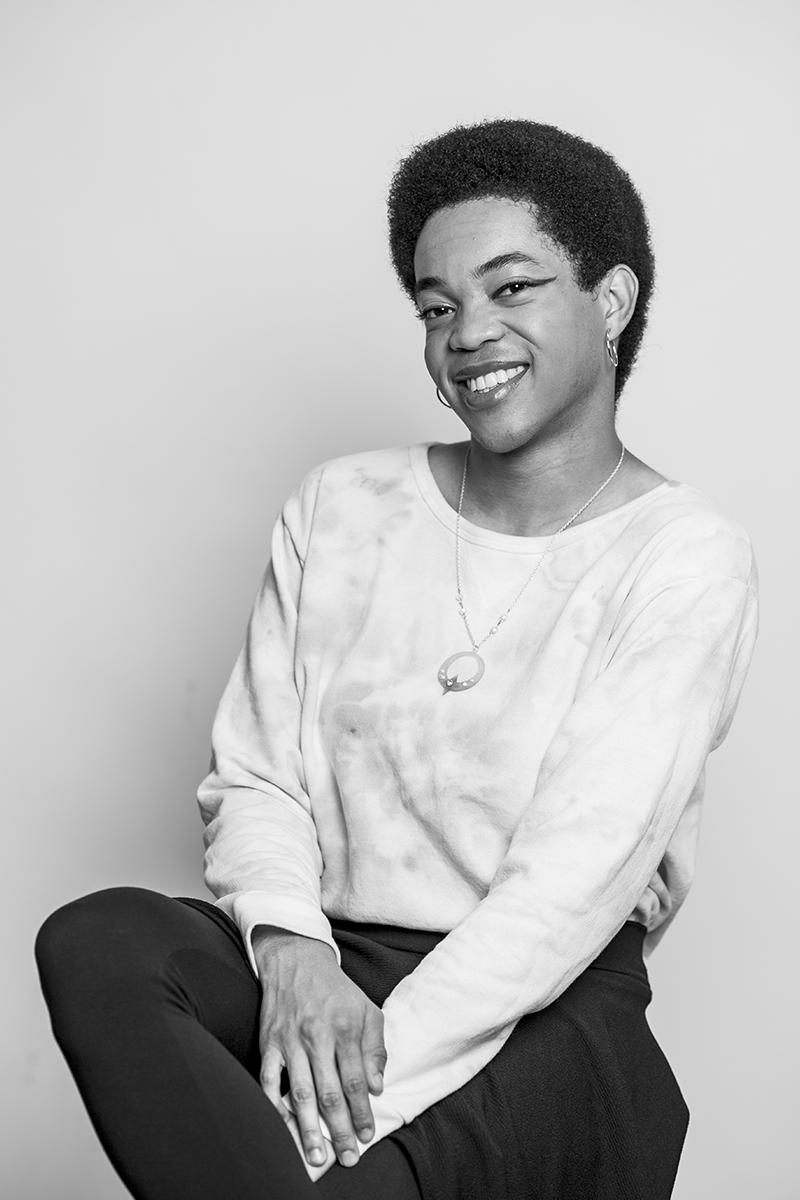

Joy*
he/she/they, fourth-year media arts and screen studies
[My gender identity] is definitely a journey. One of my friends was telling me they just painted their nails and they didn’t care what their parents said or anything. I have never been able to do that. Over time, I’ve come to break out of that shell, especially coming to Northeastern, just Boston in general is just, oh my gosh, there’s so many different people around me compared to my mostly white, cis, high school life in Kansas. Theater was a really big thing [for me] in high school. I was in the Wizard of Oz, and the person who [was] the makeup artist was like, “Okay, so how do you want your makeup to be?” And I was like, “You’re asking me this? I have control over this?” That was [my] first time with eyeshadow and eyeliner and stuff. My favorite [TV] show is Steven Universe. The cool thing about Steven and that show is that he’s described by the creator as gender nonconforming. There’s this episode, called Sadie’s Song, where Steven goes up stage in place of his friend and wears glam makeup, and it’s not played off for comedy. We can actually represent ourselves in the media in ways that aren’t played as a joke. And it can be super serious, interesting, and empowering. I went to an AfroSpectrum meeting, and we were talking about whether or not our Blackness affects the coming-out process. And it depends because there are lots of different Black people and lots of different cultures in the African diaspora, but being a seventh generation Black person and coming from descendants of slaves, I think there’s oftentimes this worry that comes from my parents and family members that if you’re also gender nonconforming, that means that there’s even more forces that are going to be against you. At the end of the day, it’s not really a choice. Over the years, after trying to bury things and just pray it all away, that never worked. And so it was just like, “Well, okay, I guess this is a part of me.” I think that’s pretty cool, but it is something I often think about, how all these different identities that we have can often make it even harder to exist in this world, so it’s this balancing act sometimes.“My favorite [TV] show is Steven Universe. The cool thing about Steven and that show is that he’s described by the creator as gender nonconforming. There’s this episode, called Sadie’s Song, where Steven goes up stage in place of his friend and wears glam makeup, and it’s not played off for comedy. We can actually represent ourselves in the media in ways that aren’t played as a joke. And it can be super serious, interesting, and empowering.”Relatively recently, my parents were like, “You know what, you’re an adult, you can make these decisions, we’ll support you. We’ll try to learn more about you and your identities.” They’ve become more understanding…or maybe not even understanding, but more respectful. I heard someone say, “You don’t have to understand it, you just have to respect it.” I think a lot of people have an idea of what a nonbinary person’s supposed to look like and it’s usually someone who’s white, transmasculine, androgynous…but there’s lots of different ways of being nonbinary, just like there’s lots of different ways to be Black. It’s a rainbow, if you will. *Joy asked to be identified by only their first name to protect their privacy


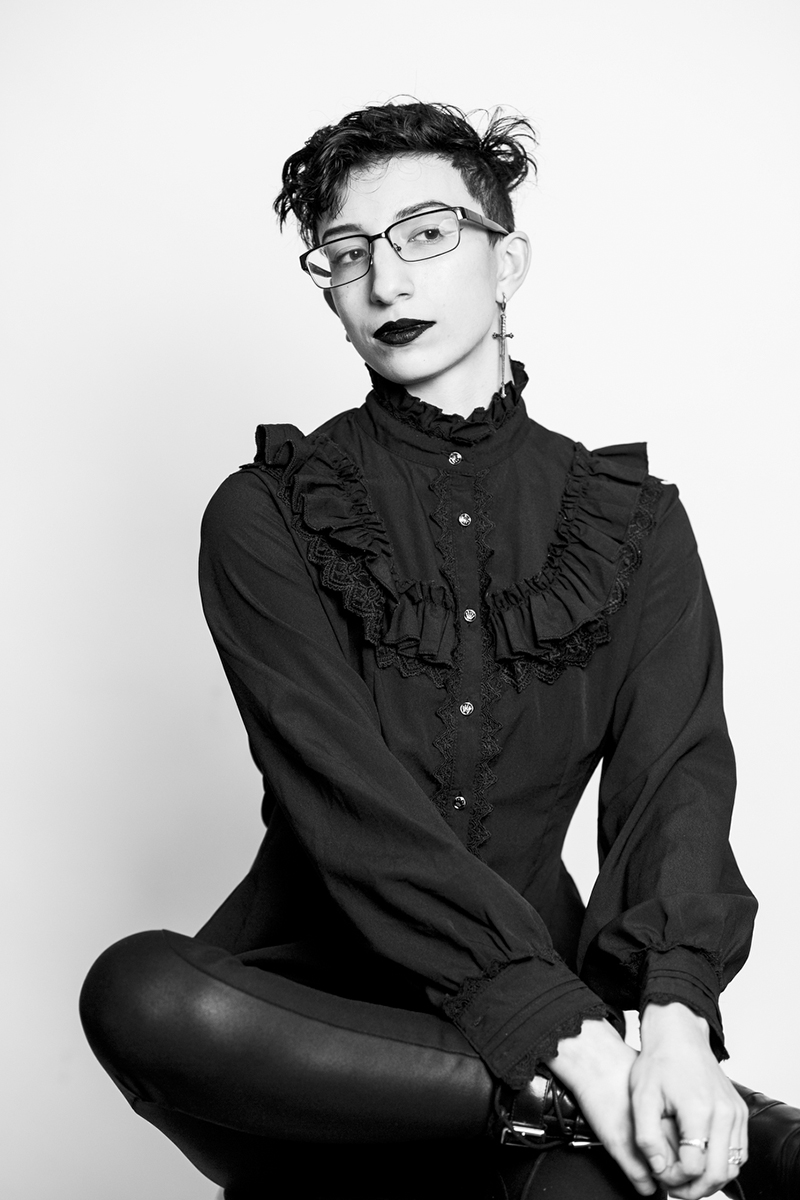
Sky Bauer-Rowe
they/them, fourth-year psychology
Freshman year of high school, and even eighth grade, I was questioning everything. In contrast to my conservative Catholic family, I was introduced to feminism and more liberal politics, and I was like, “Oh, I’m a woman! Girl power!” Later on, I was like, “Maybe I’m not as much of a woman as I thought.” Once in high school, I wore dark lipstick. And a friend said, “It looks so great,” and I was like, “Thank you, I didn’t know if I could pull it off or not.” She said to me, “You could pull off any lipstick, any dark lipstick that you want to wear,” and that gave me permission to dress the way I want. Unfortunately, I sometimes rely on outside validation for my actions. But over time, I realized that I don’t really need it anymore, which also contributes to me not caring what people say directly about my gender.“But I think self-confidence, even in an oppressive world, goes a long way—knowing that you are worth something, even when the whole world is against you.”The woman-man binary was super limiting because I didn’t really want to be a boy, but I didn’t feel like a woman either. What is womanhood? What is that supposed to mean to me? I went to one of those pre-college programs at Brown University, and I was introduced to all these new identities. My entire friend group there, everyone was queer in some way or the other, and I’m like, “Whoa, you can do this?” I also acknowledge that I am the picture-perfect nonbinary stereotype, where I’m androgynous, white-passing, dark-haired, skinny. So it’s easier for me to walk in this space even though I am trans and nonbinary. But I think self-confidence, even in an oppressive world, goes a long way—knowing that you are worth something, even when the whole world is against you. There are times where people can not tell what gender I am, especially with my clothes, which is always really, really affirming cause that’s what really I seek to do is be very androgynous, though that’s not the only way of being nonbinary. There’s no right way to be nonbinary. Specifically, with labels, there’s a lot of discourse on who can be what, who can say what. It can be very frustrating because sometimes I’m basically arguing for my existence, and it creates a lot of frustration. I have to literally put my phone down and walk out of the room. I’m very loud about who I am, and I don’t try to hide it. One of the most important things I can do is be loud and visible for those who can’t and say to them, “It is possible to be as loud as me one day.” Almost like a silent or an indirect role model, which is what I had growing up. Now it’s my turn to be that person.
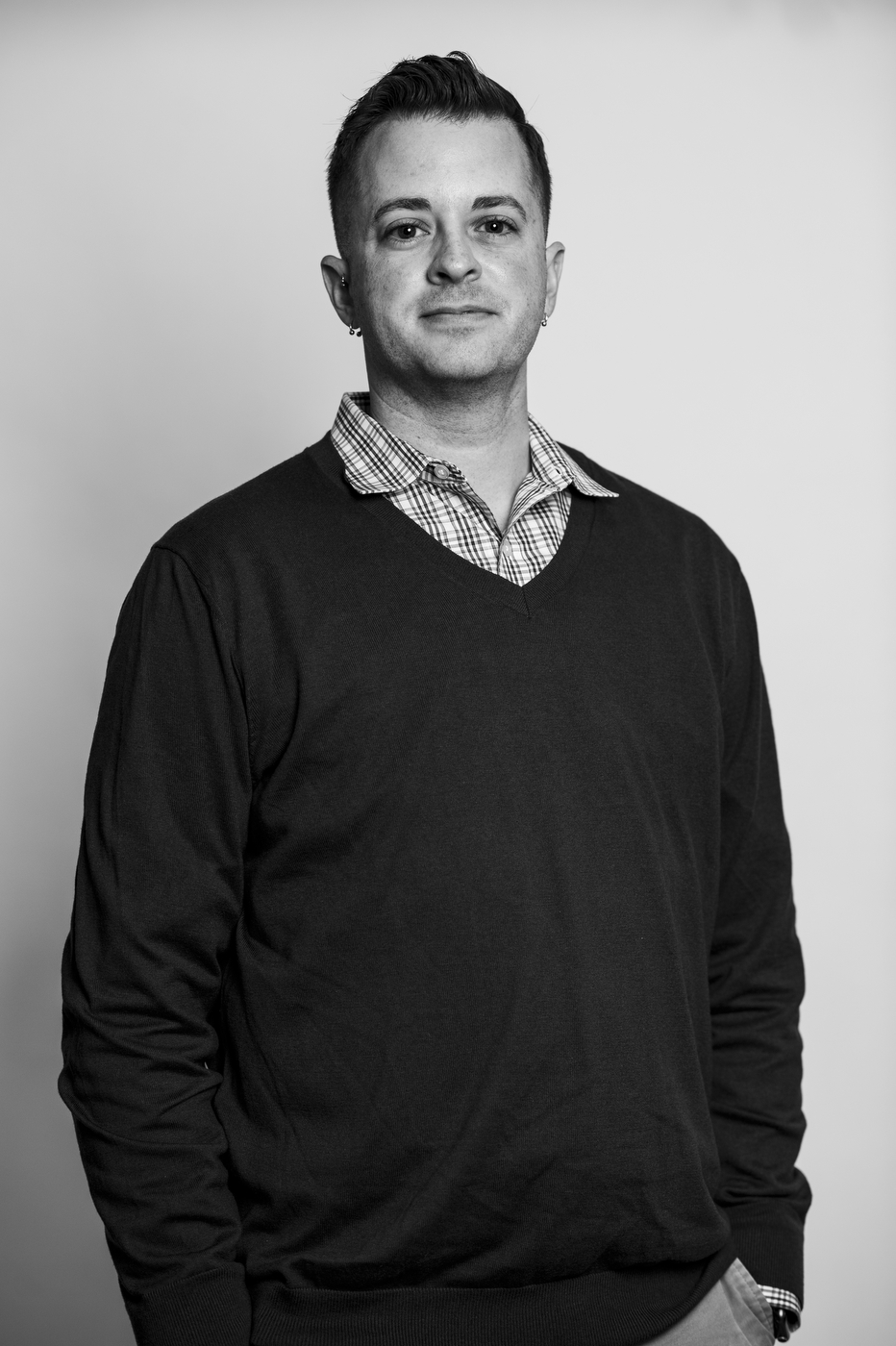
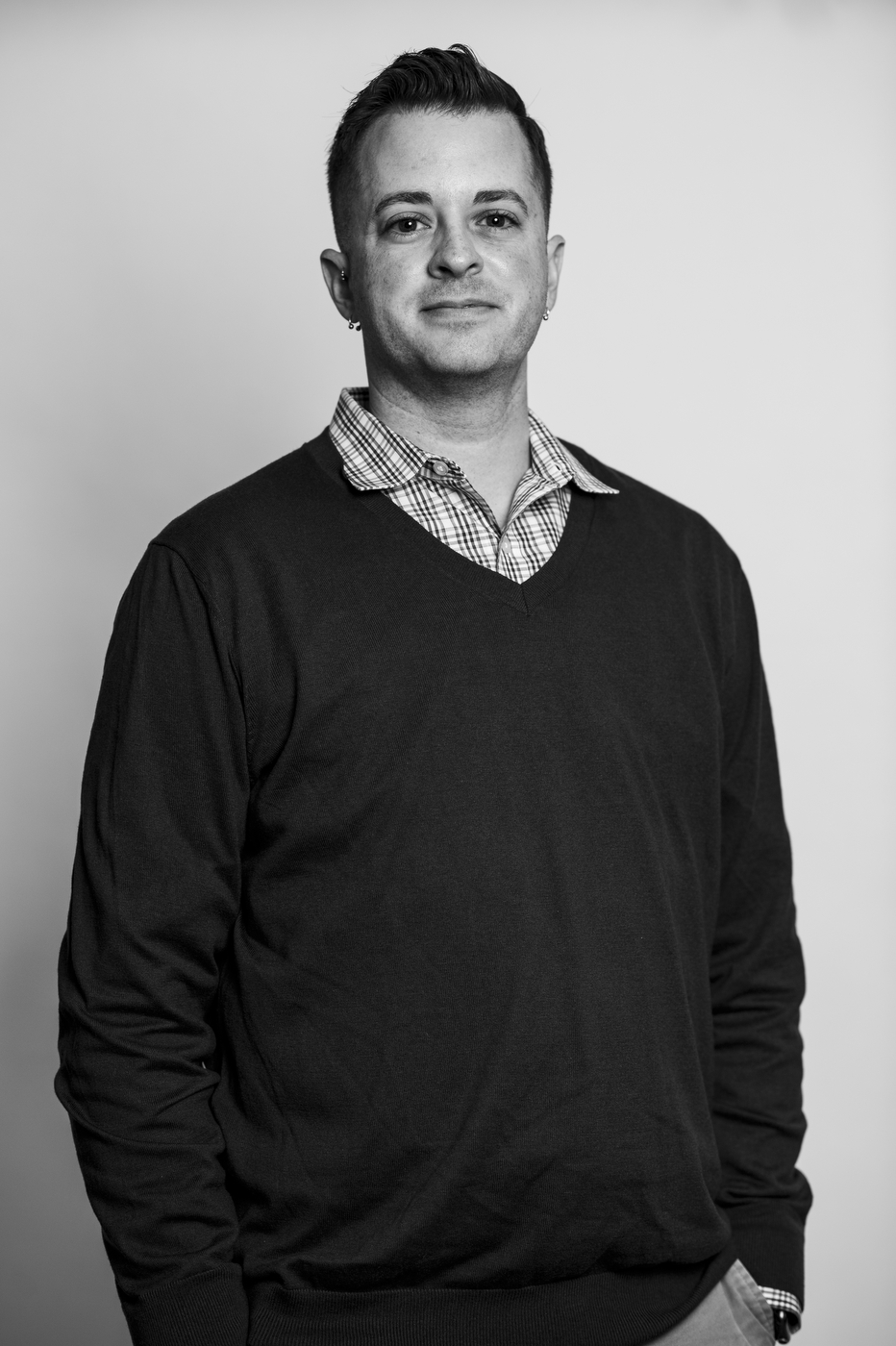
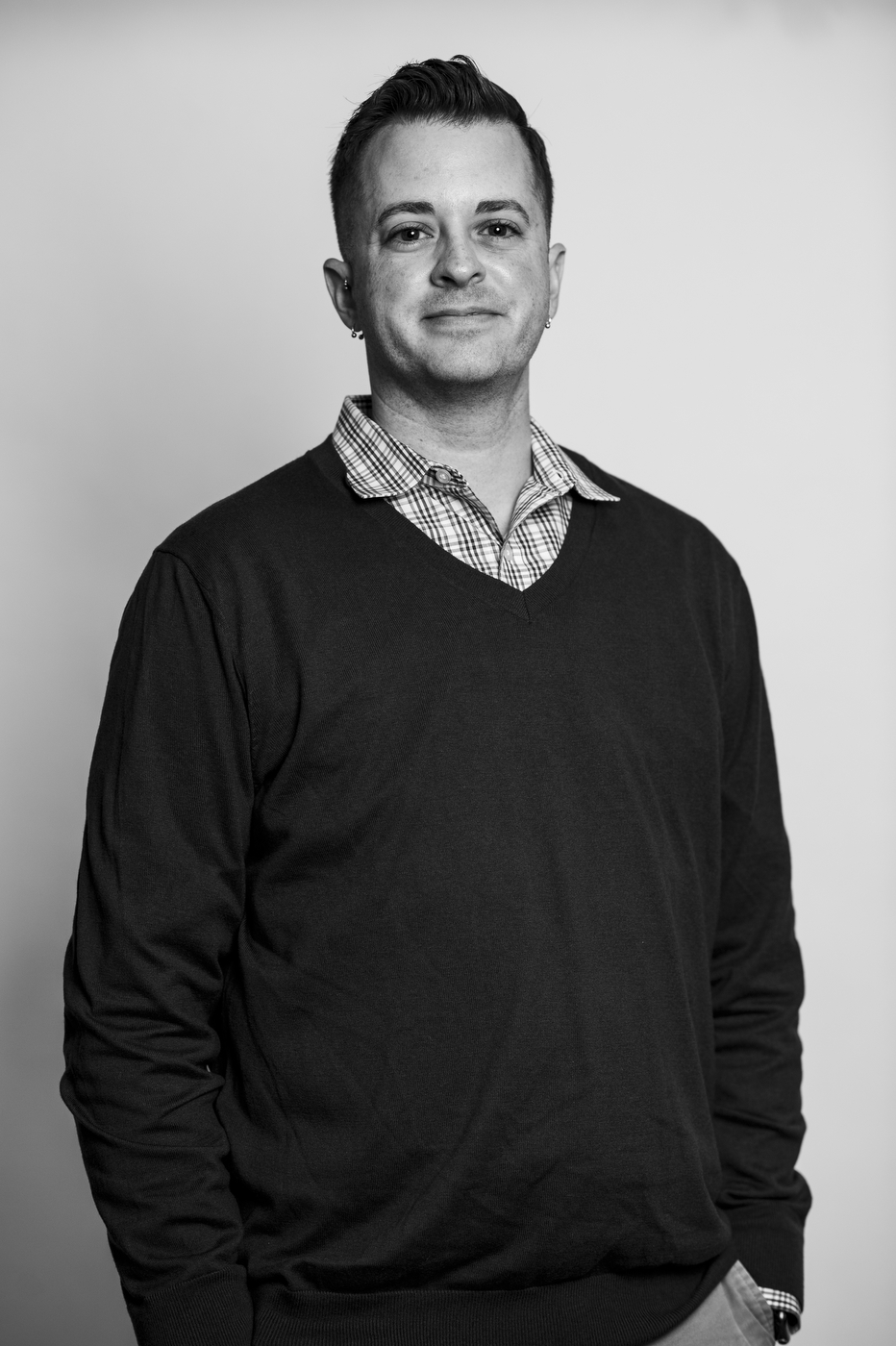

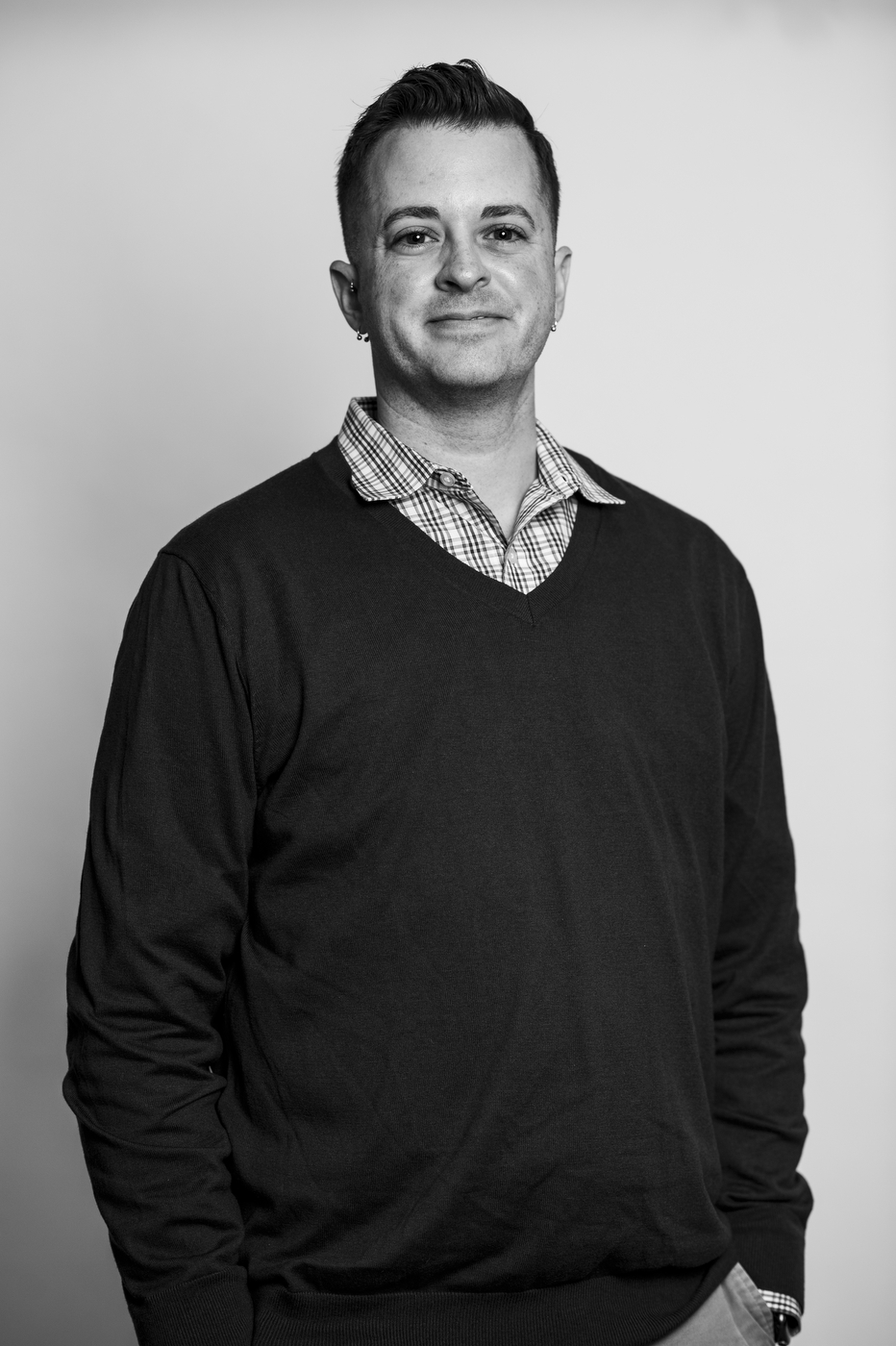
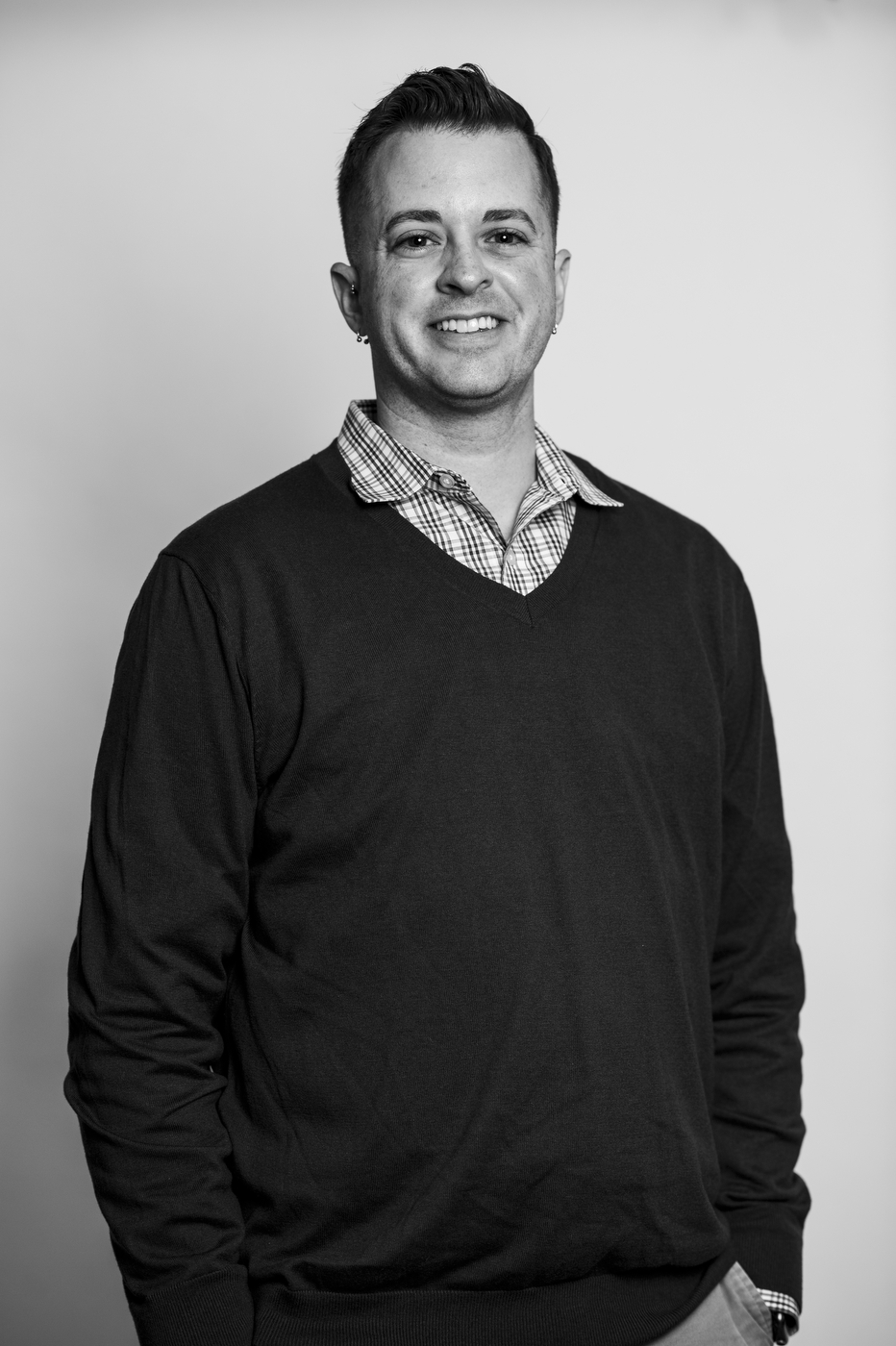
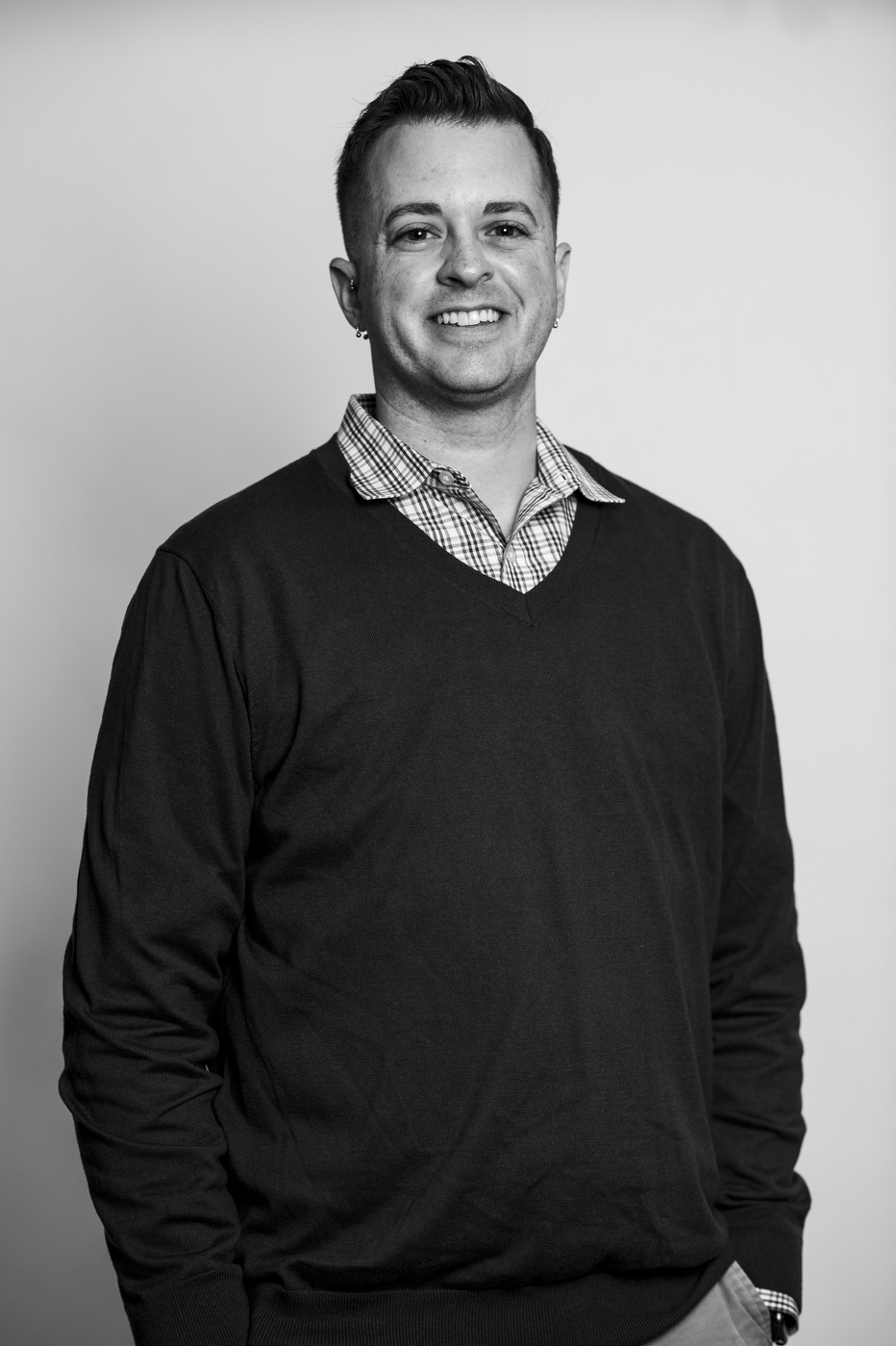
K.J. Rawson
he/him, associate professor of English and women’s, gender, and sexuality studies
I direct the Digital Transgender Archive, which is an online resource for transgender history, and I co-chair a project called the Homosaurus, which is a queer thesaurus that makes materials in libraries and archives more discoverable. The Digital Trans Archive was a response to a research problem—trans history can be really hard to find. There’s a lot of reasons for this, but in general it’s hard to know where it’s held. It’s hard to know what to look for and what words to use to search for, because the term transgender is so new and so ubiquitous.“It can be so important and transformative for other folks experiencing gender in ways that are different from those that are culturally normative to connect with other people and form community.”The Homosaurus actually came about as a lined data vocabulary as part of the Digital Trans Archive because when we were trying to describe materials in the archive, the controlled vocabularies or the languages that we had available to describe our content were really homophobic and transphobic. The editorial board started to adapt this vocabulary that had been created in the 1980s, and then we updated it, and we’ve been working overseeing the vocabulary as an [editorial] board ever since. There’s so much opportunity for people who are cisgender or gender-conforming, who haven’t thought critically about their gender experiences, to learn. Part of the work I try to do with the Digital Trans Archive is to provide access to histories and stories to deepen empathy and understanding of trans and gender-nonconforming communities so that people can not just be aware and tolerant but become advocates for [the people in those communities]. I’m [also] teaching an Intro to Trans Studies course this semester. It can be so important and transformative for other folks experiencing gender in ways that are different from those that are culturally normative to connect with other people and form community. It can be hard to find people in close proximity to you that are also trans, gender-nonconforming, or share other parts of your experience. To be in community with people who don’t have to work hard to remember your pronouns and people who’ve experienced similar struggles is a safe place to talk through what it’s like to move through more hostile spaces in the world. The college years can be so transformative for individuals’ sense of self and identity. You have an opportunity to explore new ideas, communities, and worlds, and you’re starting to live independently. For many people, this is the first time they’re exploring their gender identity. It can be a profound and all-consuming experience. Part of the reason I was drawn to Northeastern is that I felt comfortable and confident to come out as a queer and trans person. That is something that especially younger trans and gender-nonconforming folks need to see—you can be successful not just in spite of being trans, but because you are trans or gender-nonconforming. There are places where you can work and be out and loud, and that is a valued part of your contribution to a community.
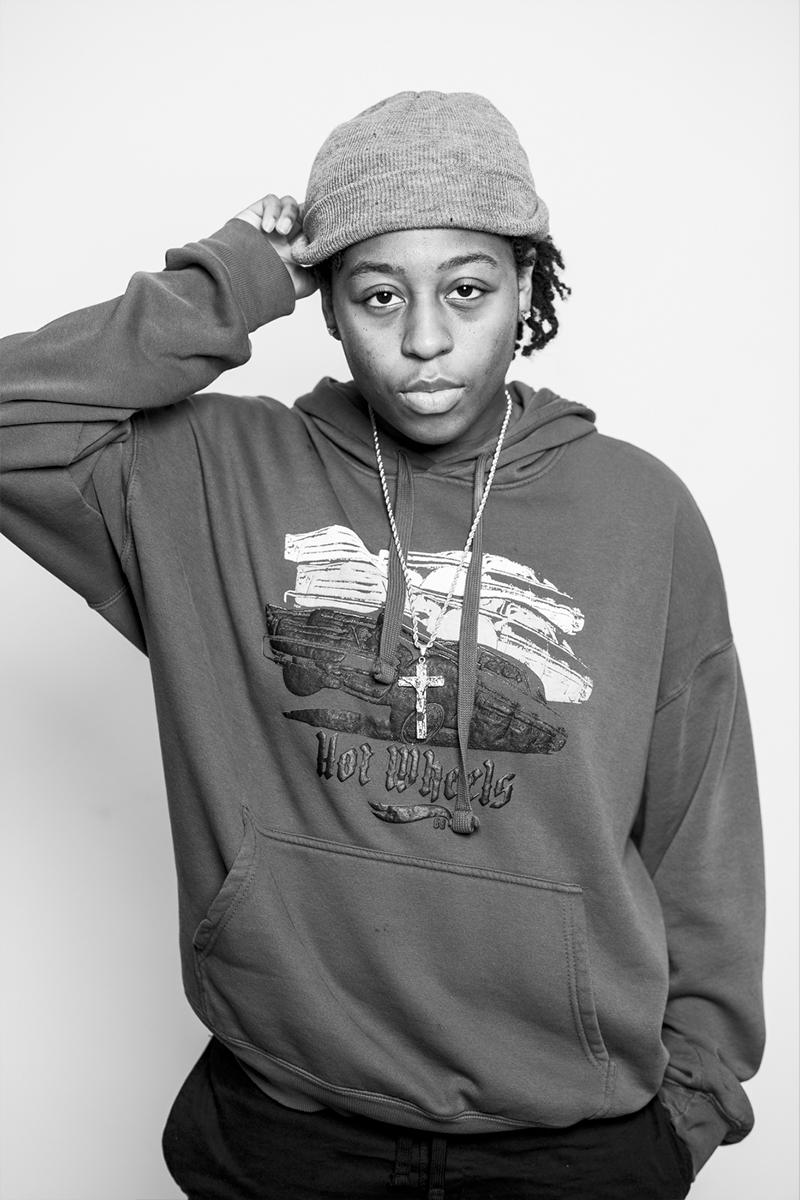
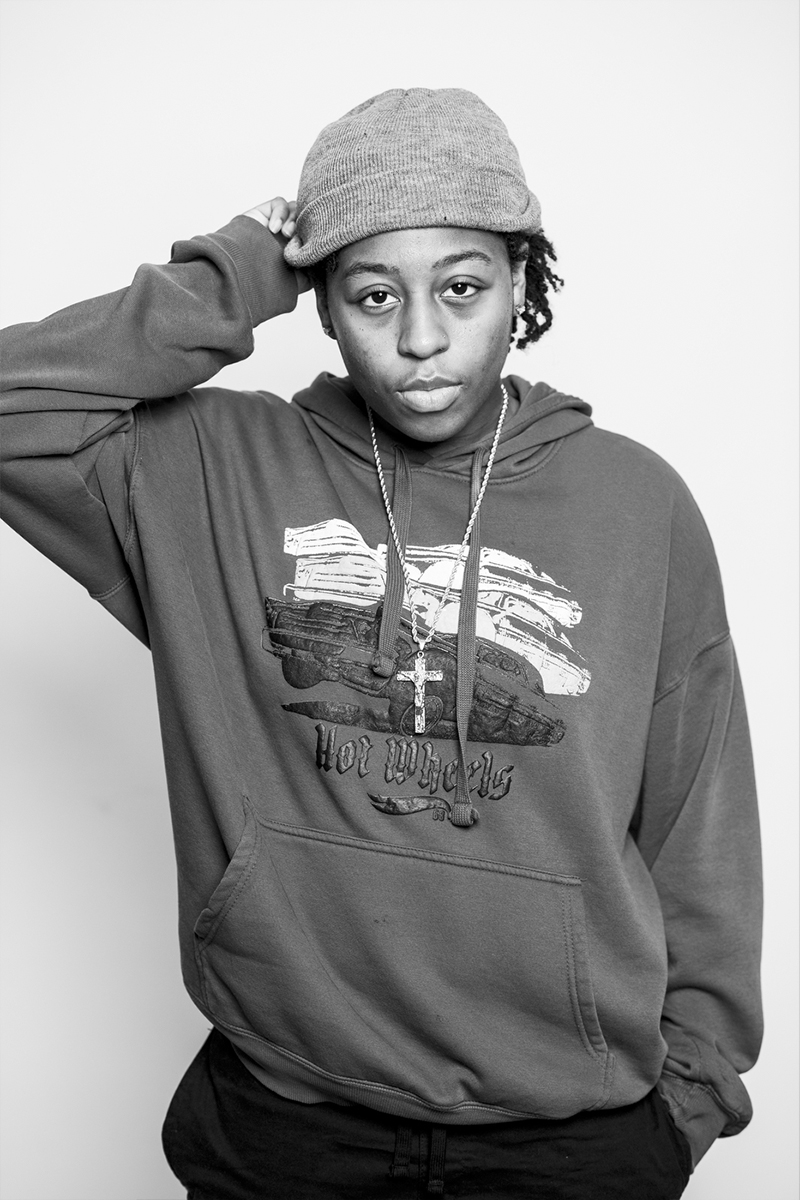
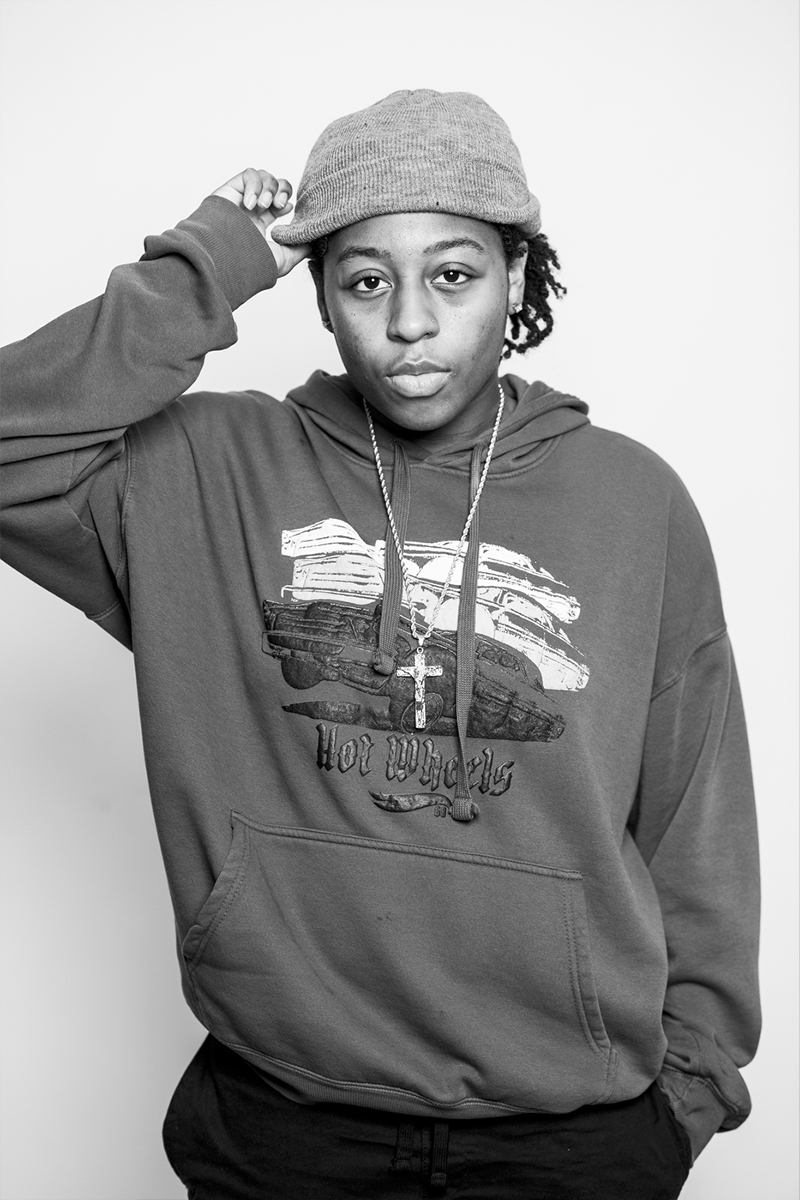
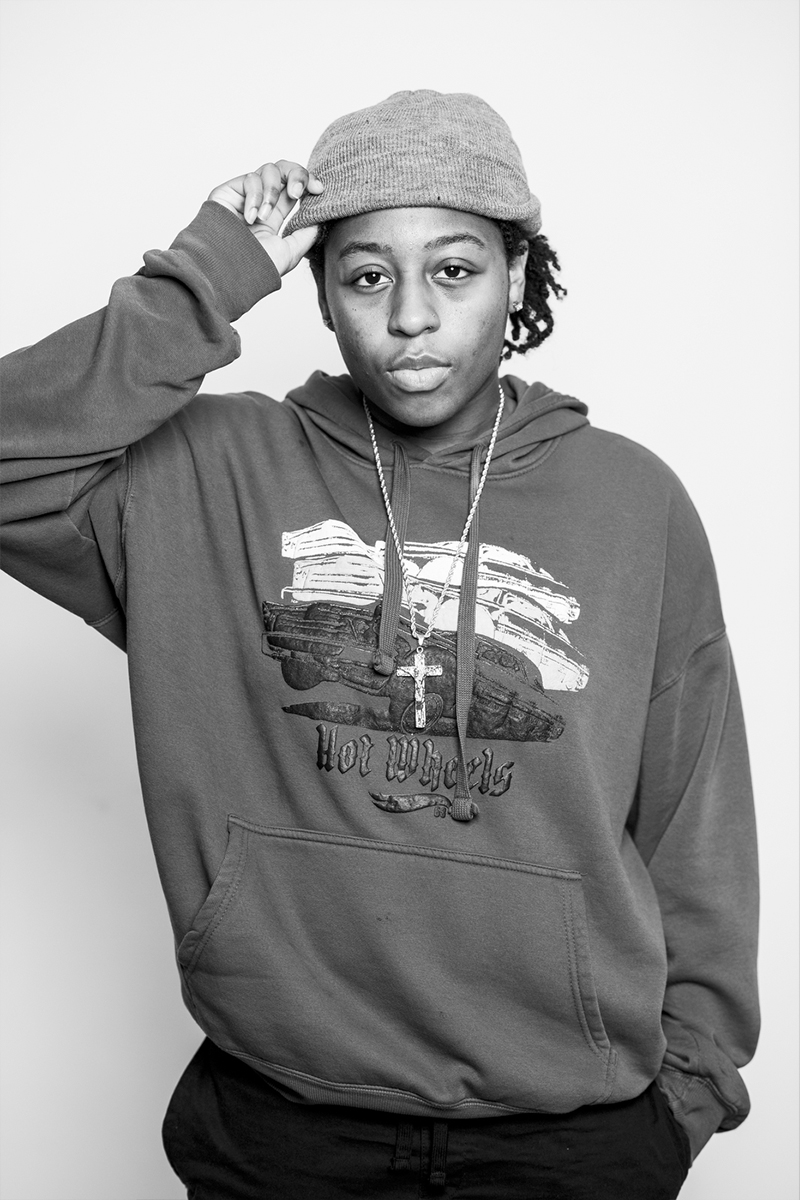

liz Peart
she/they, first-year business
For most of the 18 years of my life, I’ve been feminine-presenting. It wasn’t until two and a half years ago that I really started to express myself in the way I chose to. At one point, I was like, “I can’t do it anymore. I have to be who I am.” When that happened, all hell broke loose. I either lost friends, or my family treated me differently, mainly my parents. People see your appearance, and they automatically judge you. I’m obviously more of a masculine-presenting woman. So people see me, and they’re off about it. I often have to explain myself to them, or I’m misgendered, or my pronouns are misused. You have to fight to own your identity, and I really hate that.“It’s a journey. Don’t ever feel that you have to stay in one place just because it’s how you felt at one certain point in time. You will move with your journey. It’s okay to feel differently, and it’s okay to evolve. Don’t feel like you have to stay in one spot.”When I was in [high] school [being around people] that were confident in who they were really edged me to come out of my shell. I knew who I was, but I was never confident enough to say it. Seeing those people I was around, for example, lots of gay Black women, was like, “I’m that, but I’m too scared to say that I’m that.” It was hard during that period, but it felt so good when I said, “Wow, there are people just like me.” Extra words of motivation: It’s a journey. Don’t ever feel that you have to stay in one place just because it’s how you felt at one certain point in time. You will move with your journey. It’s okay to feel differently, and it’s okay to evolve. Don’t feel like you have to stay in one spot. If this is how you feel, it’s okay to come out. If you’re not in a safe place, that’s different, but don’t feel that you have to hide yourself for anybody because true people will come to you, and they’ll see you for who you are. I experienced a lot in my past that was really negative in terms of coming out, so I know how it feels. So if anyone needs anything, you can always talk to me. Maybe I’m not in the same circumstance, but you’re not alone.
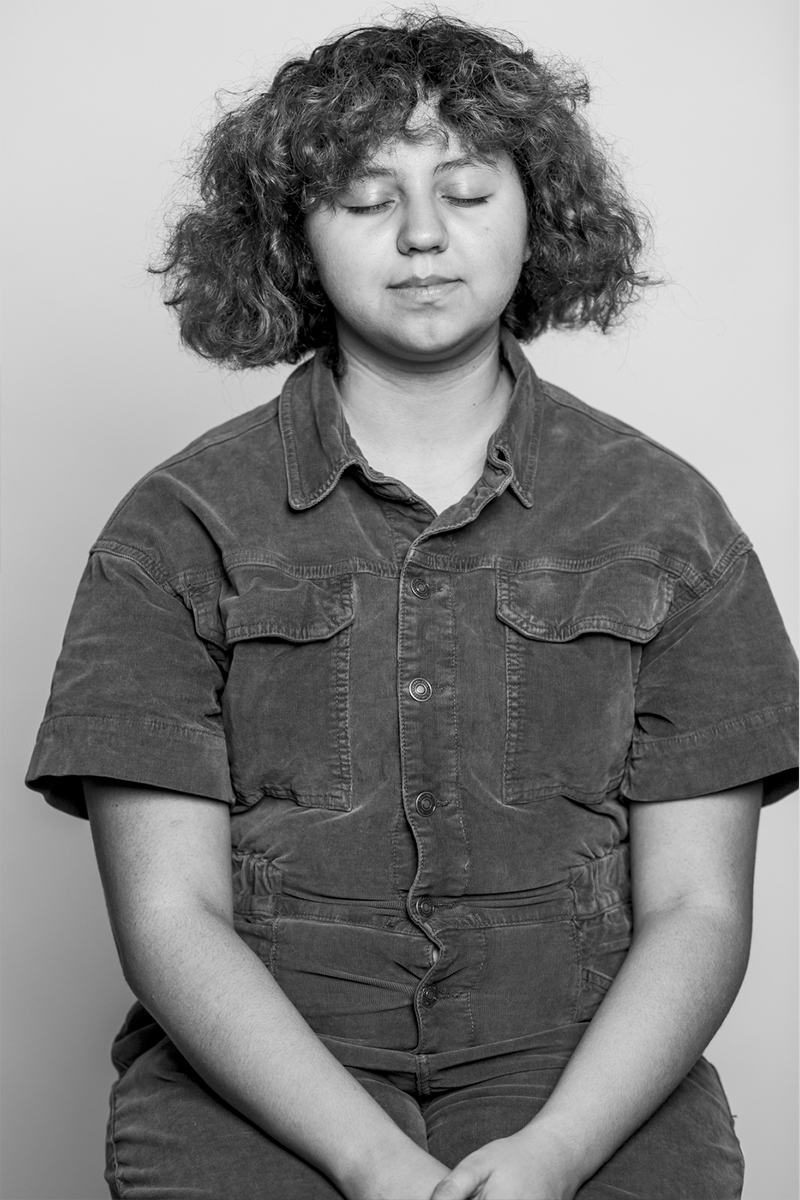
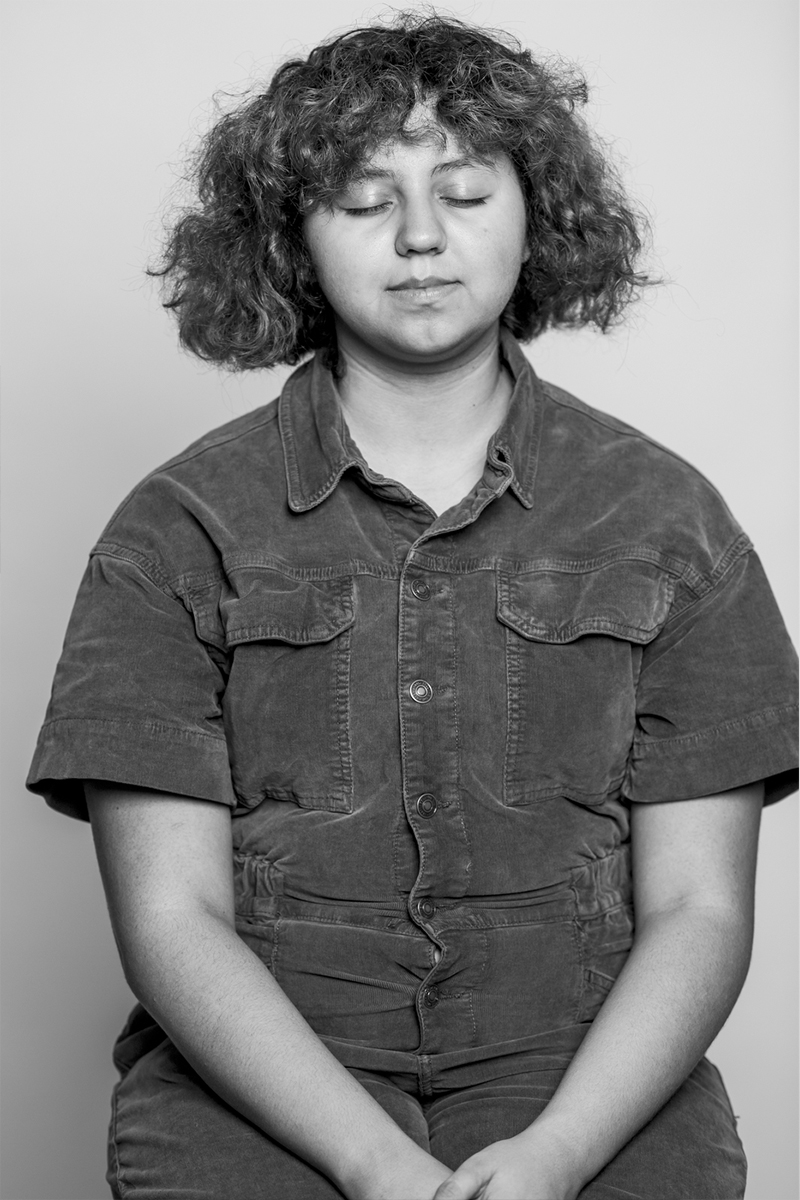
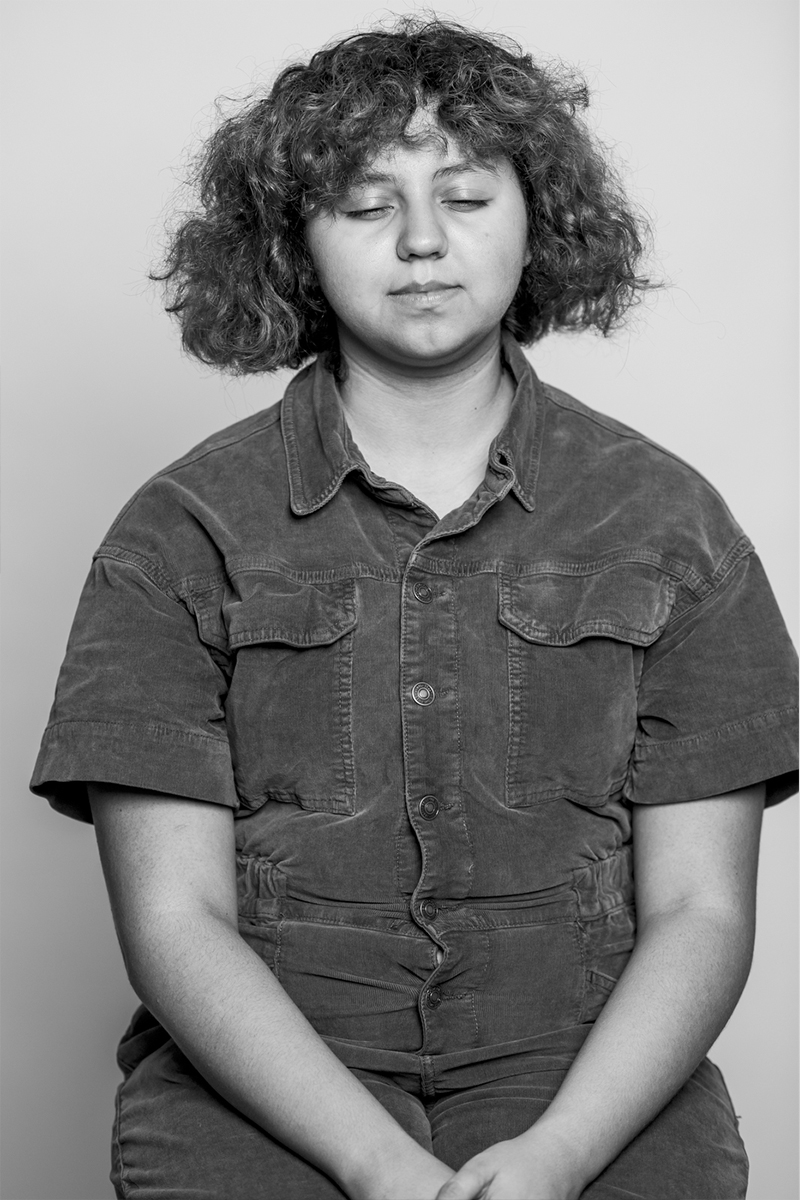

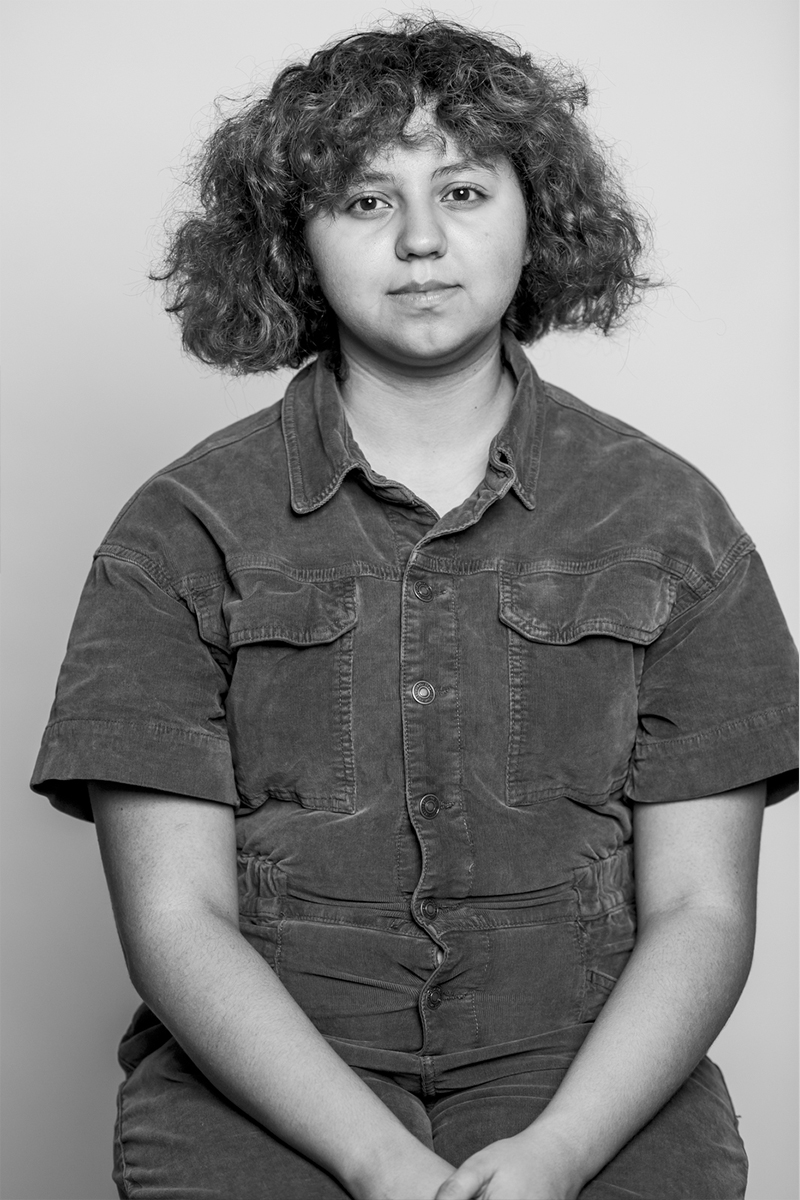
Arturo*
he/she, first-year computer science
It wasn’t just a single moment where I just realized suddenly, “Oh, maybe I’m not cisgender.” It was more like a series of moments that led to that realization. My gender identity labels have definitely changed over many years. When I was younger, I used to do musical theater and that theater was a really great space for LGBT youth because most of us happened to be LGBT. Me coming out wasn’t a big deal at all and everyone was so casual and accepting of it. They didn’t have to constantly correct themselves because they just understood who I was.“I think [misunderstanding gender identity] simply derives from old-school beliefs of gender. You don’t have to understand all the nuances and complexities that come with gender identity to be respectful and accepting of people who identify themselves in unconventional ways. You should just be willing to talk to people who have those different ideas of gender.”When I was experimenting with different labels and pronouns, they weren’t bothered by that at all. They didn’t try to interrogate me on why. And if I felt comfortable explaining, I did, but they never demanded it from me. Back then, I didn’t necessarily have the words or understanding to describe my dysphoria. Talking and communicating more with other transgender people, both in real life and online, definitely aided me throughout my journey. I think [misunderstanding gender identity] simply derives from old-school beliefs of gender. You don’t have to understand all the nuances and complexities that come with gender identity to be respectful and accepting of people who identify themselves in unconventional ways. You should just be willing to talk to people who have those different ideas of gender. Just try to educate yourself, because even though you were raised on certain notions of gender, those notions are outdated and frankly, they’re regressive and harmful. There are always different perspectives that you can learn so much from. *Arturo asked to be identified by an alias to protect their privacy
Get the full list of resources from the LGBTQA Resource Center.
Produced by Addison Dlott Photographed by Alyssa Stone Developed by Hannah Moore





